Puebla is just a couple of hours away from Mexico City and is a complete contrast to that glorious, sprawling metropolis. It is a delightful city to visit and the historic centre is a UNESCO world heritage site. It is also a city of great deliciousness – the Puebla food scene is astonishingly diverse and exciting. After all, this is the city that claims to have invented mole poblano!
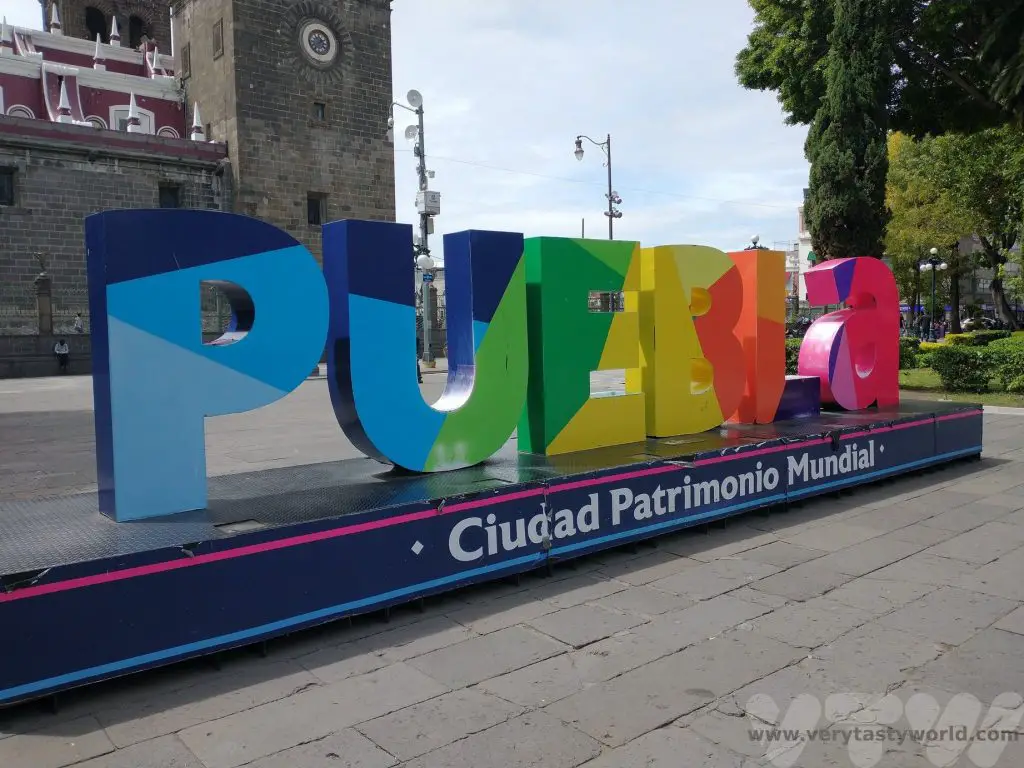
Getting to Puebla
We were travelling through Mexico on buses, which was a lovely way to see the countryside. The buses are largely comfortable and on time but journey times can be long. The bus stations are usually located on the edge of town, so we tended to use taxis to get to and from our hotels. Most of the taxi drivers were excellent and, even though the journeys were unmetered, the costs were pretty cheap – usually lower than $10. There was only one place where we got shafted by a taxi driver and that was in Merida (which is a lot more touristy) who overcharged us for a very short journey so it’s advisable to agree on a price in advance – and to be able to count in Spanish! When we arrived in Puebla we discovered a taxi rank where we could pre-pay our fare which made everything much easier.
The journey from Mexico City to Puebla took two hours. If travelling from Oaxaca, the travelling time is around five hours.
We were staying at the Colonial Hotel in Puebla, just a block away from the Zocalo main square. It’s a former Jesuit monastery, dating from the 17th century. We had an enormous room with the highest ceiling we had ever seen. Also, they provided a ginormous water dispenser in the room (you can’t drink the tap water in Mexico) and this was very useful.
Places to Visit in Puebla
On arrival we went straight to the zocalo, which is a lovely space filled with trees, sculptures and benches. We always find it useful to head for the tourist information office when we arrive at a new city, and Puebla’s is located on the northeast corner of this square, on the side opposite the cathedral. It was great chatting with the friendly staff who offered us a map of the area and list of attractions to visit, as well as some foodie recommendations.
Puebla was founded by the Spanish who had set up a trade route between Veracruz on the coast and Mexico City. The area was originally forested and hadn’t been populated by indigenous peoples, it was located between the settlements of Tlaxcala and Cholula. The soil is volcanic and as a result, the land is fertile and ideal for growing crops. The Spanish brought crops such as wheat with them and the food is therefore a fusion of local ingredients with European.
Puebla is a city filled with churches. It feels as though there is one on every street. It’s perfectly okay to wander inside although it’s advisable not to look around if a service is ongoing. There are two churches that are absolute must-sees.
Puebla Cathedral
Located on the south side of the zocalo, the Basilica Cathedral of Puebla, also known as the Cathedral of Our Lady of the Immaculate Conception, was one of the first cathedrals to be built in Mexico. It was consecrated in 1649. It is a huge cathedral.
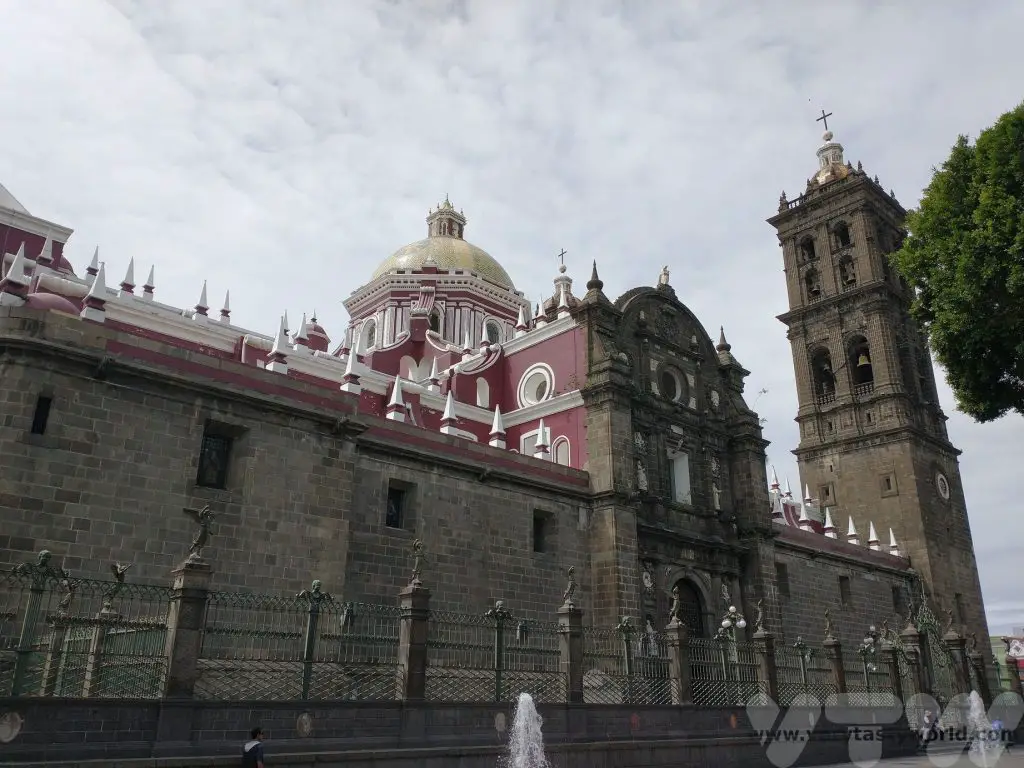
Like many large churches in Mexico, it has multiple domes and altars. The high altar is particularly ornate.
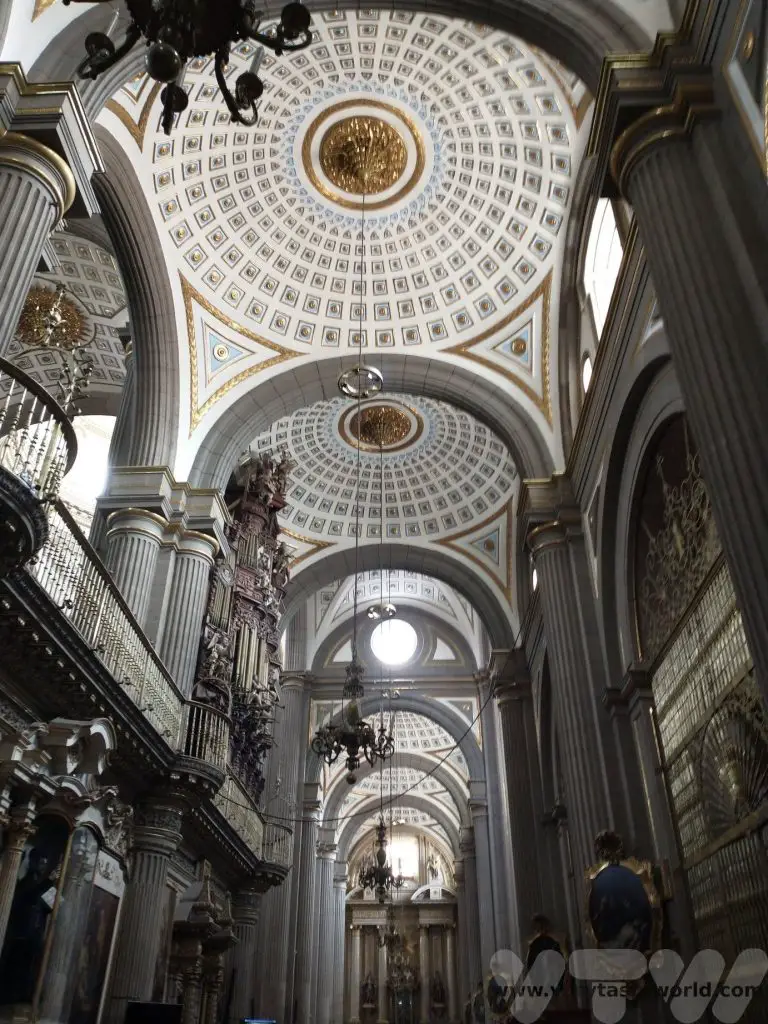
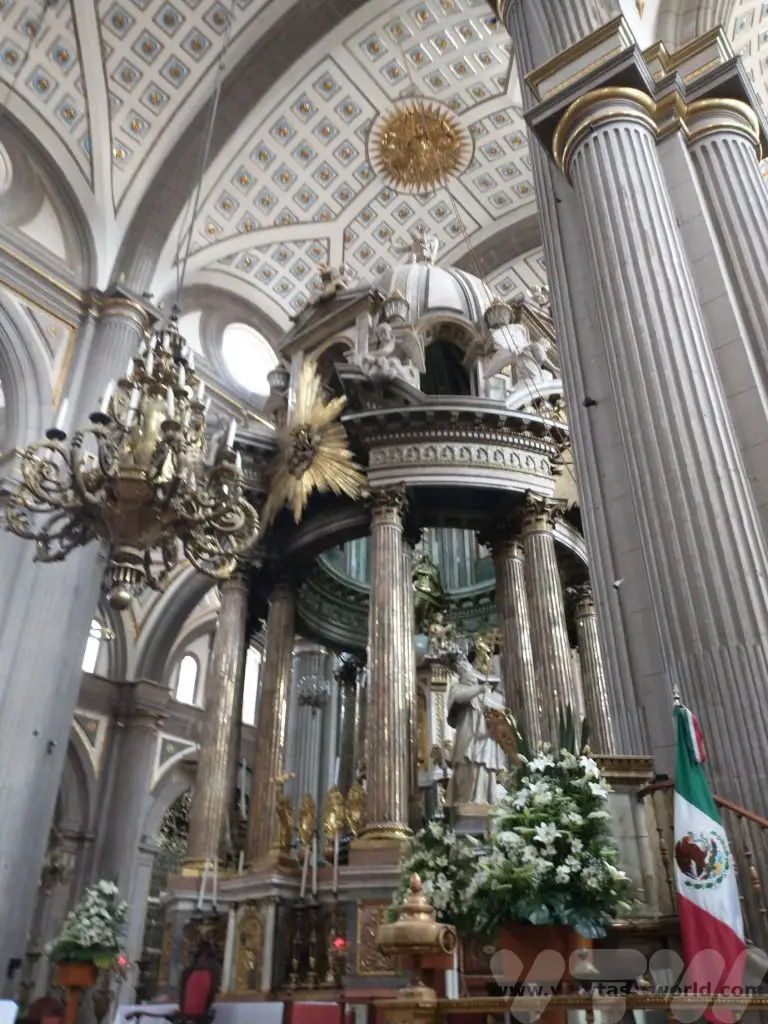
Church of Santo Domingo
The Church of Santo Domingo is remarkable for its chapel dedicated to Our Lady of the Rosary. It is a classic example of new Spanish baroque architecture and in its time was considered to be the 8th wonder of the world. It was conceived in 1650 and completed in 1690.
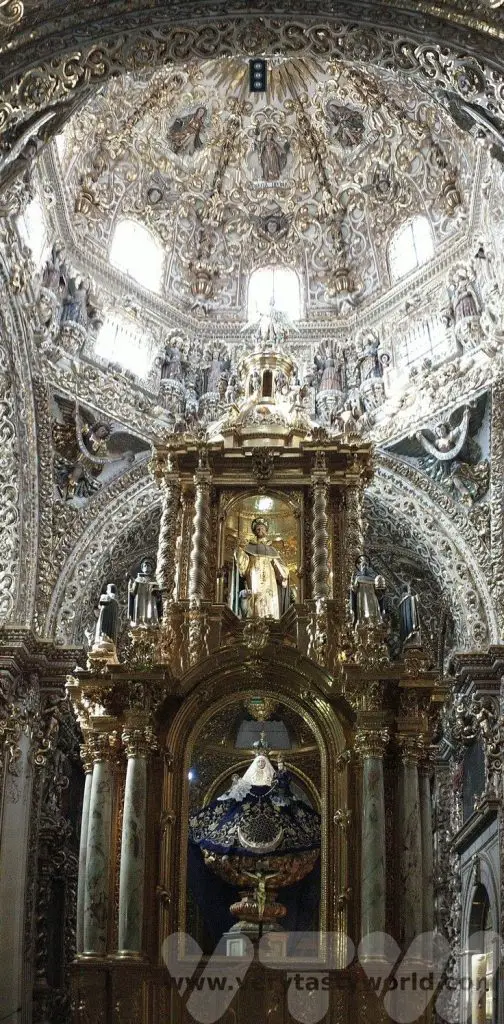
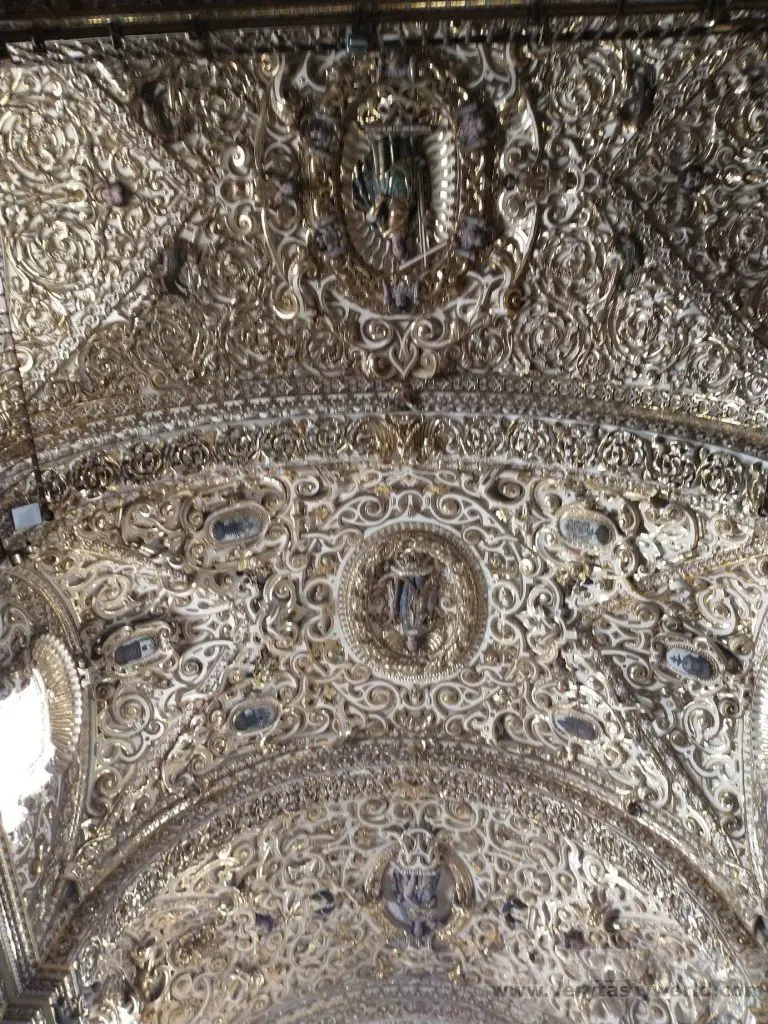
The chapel is decorated with gilded plasterwork, the highly decorative and intricate designs are coated in 24-carat gold leaf.
Biblioteca Palafoxiana
The Biblioteca Palafoxiana is the first and oldest library in the Americas and is another UNESCO site. Chock full of some 45,000 books dating from the 15th century onwards and categorised according to the subject, you can wander through the library and view the shelves as well as some books on display in glass cabinets. It has a wonderful smell – just breathe in deeply to inhale the scent of centuries-old literature!
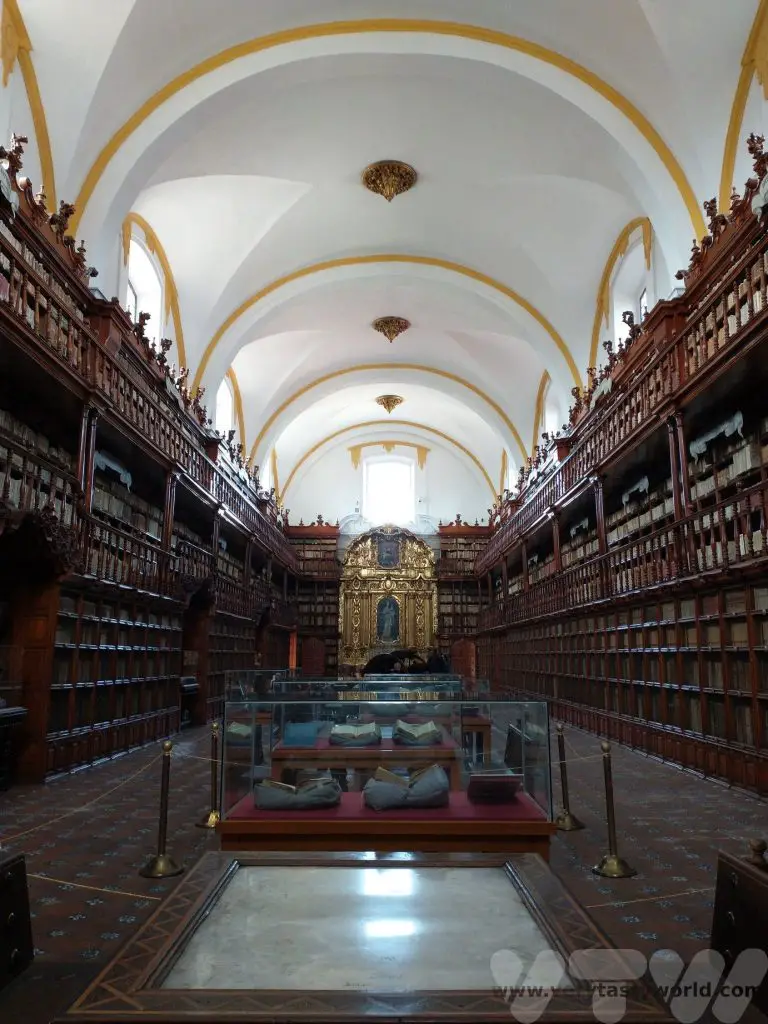
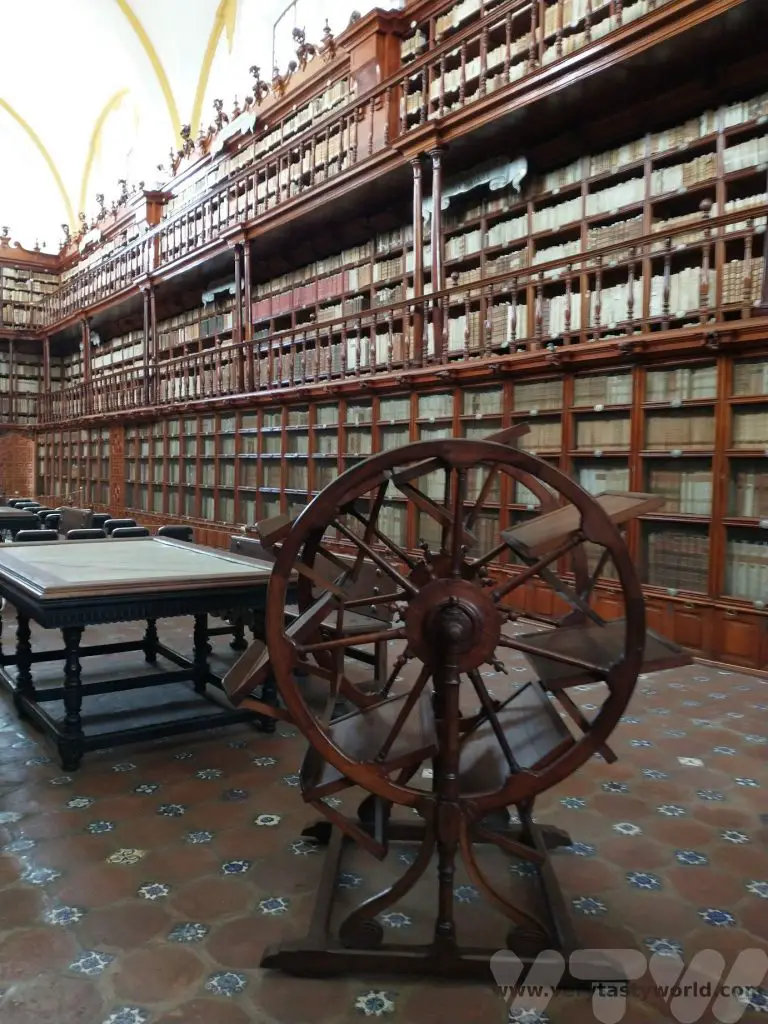
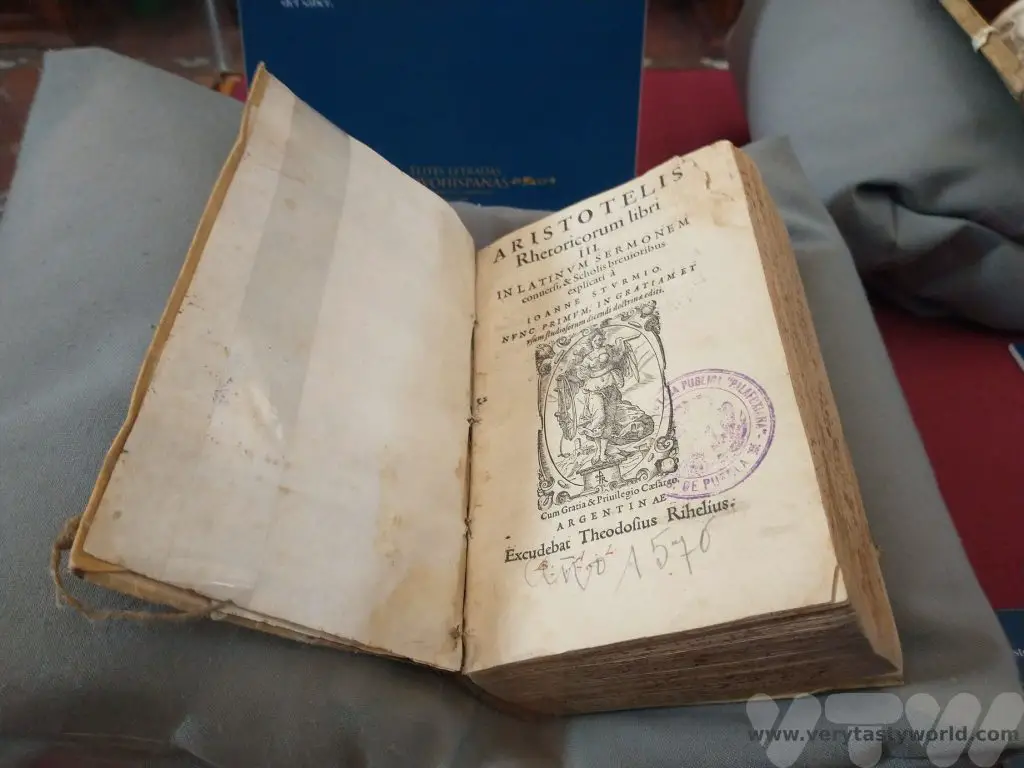
Museo Amparo
This free museum and art gallery is a joy to visit and highly recommended. Set in two colonial-era buildings across multiple levels it has several permanent and temporary exhibitions.
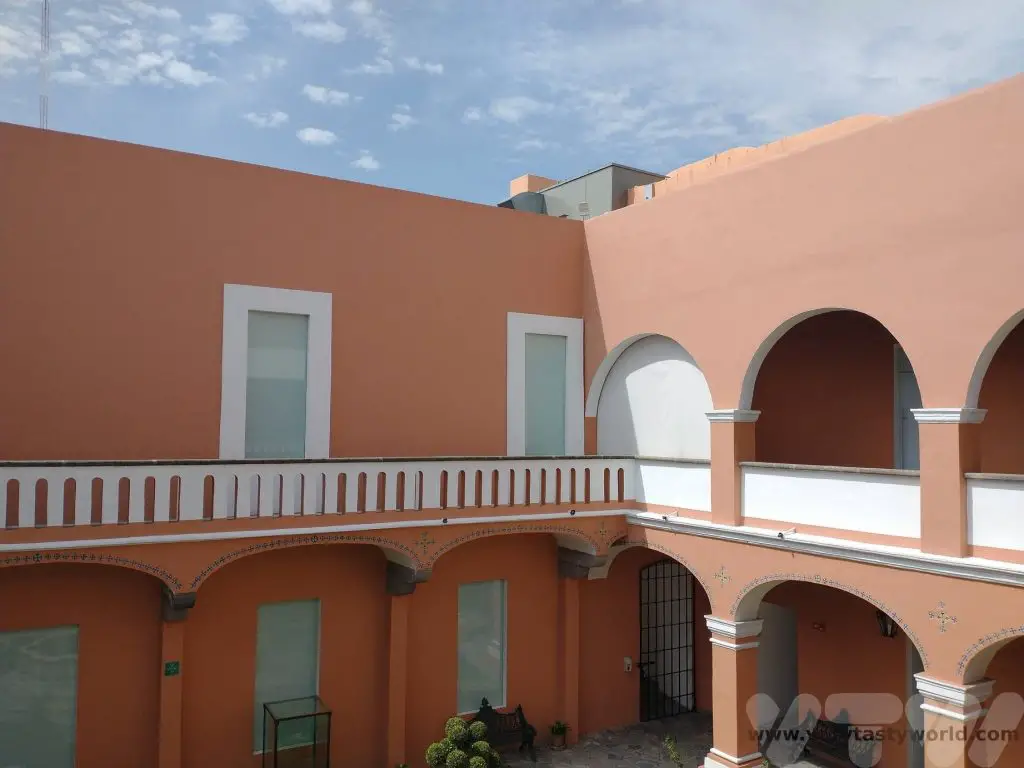
The ground floor is dedicated to the pre-Hispanic history of the region and sets it in the context of world history. It has a huge number of fascinating artefacts with pieces dating from as early as 2500 BCE.
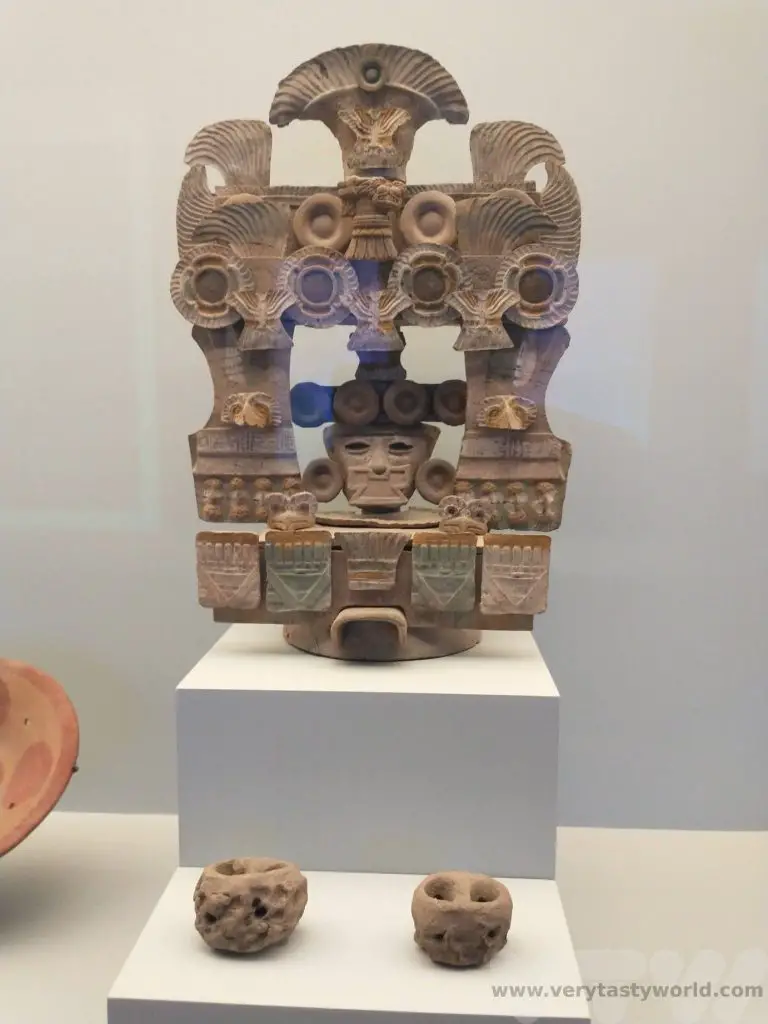
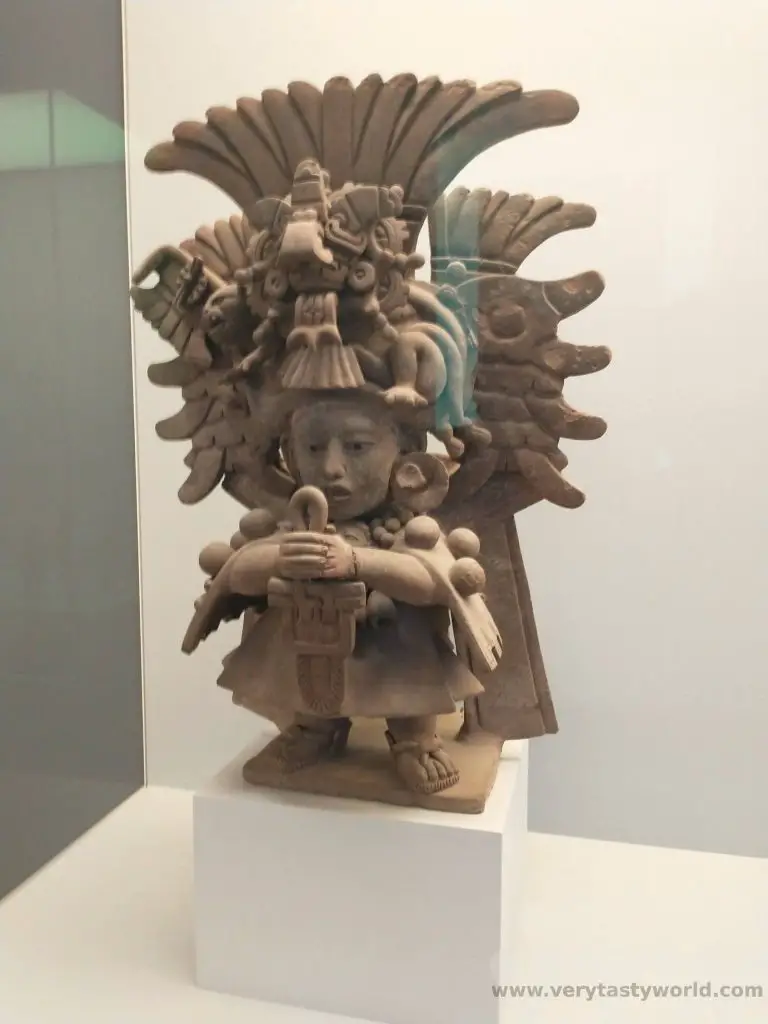
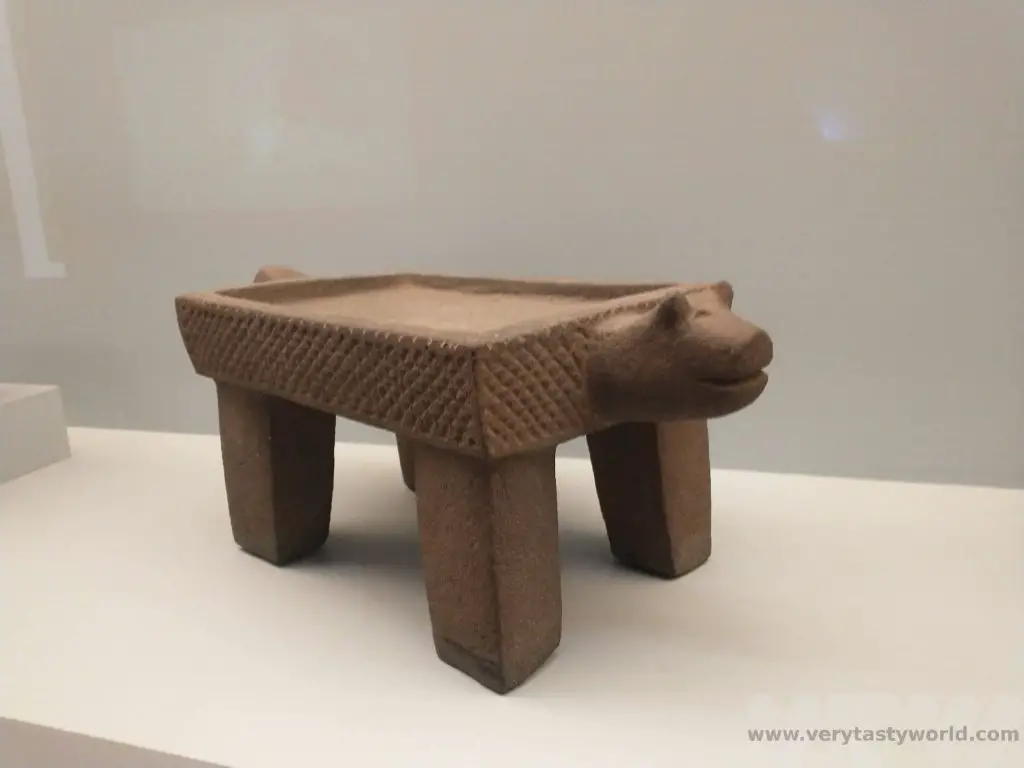
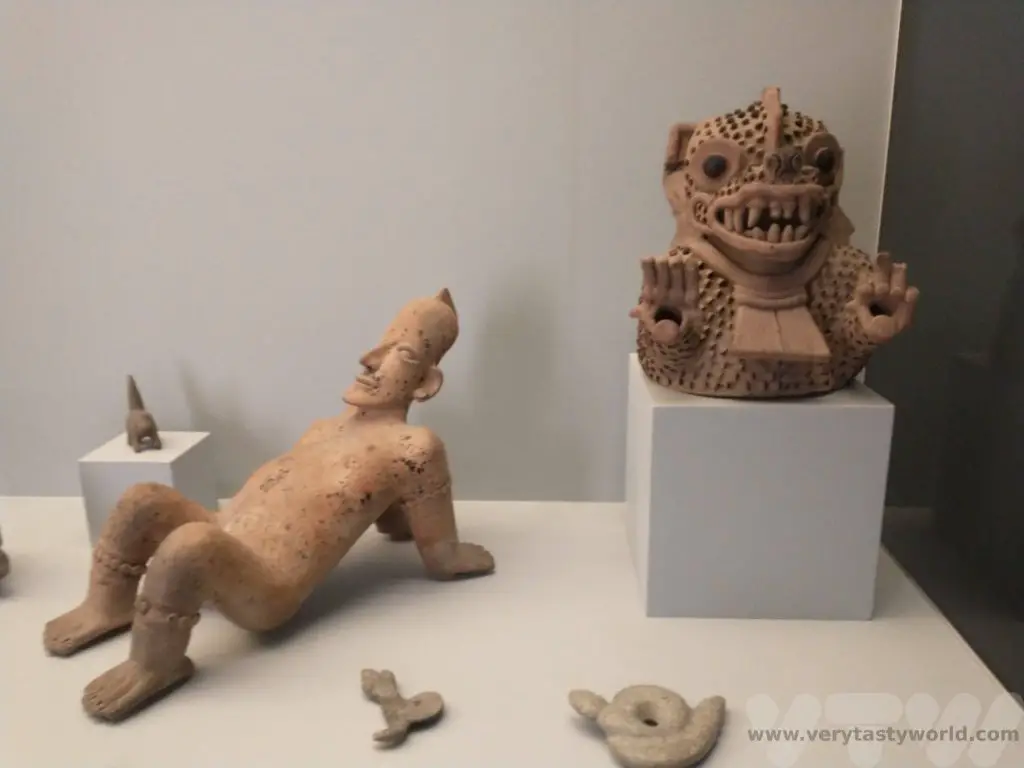
The building was the home of the Espinoza from 1871 to the 1980s, and this is reflected in the upstairs exhibits which are set out as rooms showing objects from the colonial period, including drawing rooms and a kitchen.
The Amparo has a terrific modern art gallery. There are also temporary exhibitions – we were able to enjoy an exhibition on 1970s feminism when we visited. It’s possible to spend several hours here so definitely set some time aside to explore this wonderful place.
Don’t do what we did and forget to go to the cafeteria on the second floor. Even if you don’t want a coffee or tea, there’s apparently a fabulous view of the city. We only learned about this after our visit. We’ll have to return.
Museo de la Revolución- Museum of the Mexican Revolution
This house in Calle Santa Clara was the home of the Serdán family and was the location of the first conflict of the Mexican Revolution which took place in 1910. President Porfirio Díaz had been in power for decades and was becoming increasingly unpopular. Aquiles Serdán was a supporter of revolutionary leader Francisco Madero and started planning an insurgence against the president.
However, the rebellion was foiled when members of Díaz’s government learned of their plans, and Aquiles, Máximo, Carmen, and Natalia Serdán, along with others, defended themselves inside the house from hundreds of soldiers who were shooting at them. Aquiles survived the gunfight and hid inside a hole under the floorboards where the revolutionaries had stockpiled their weapons. Unfortunately, he coughed when the authorities raided the house, so was discovered and later killed.
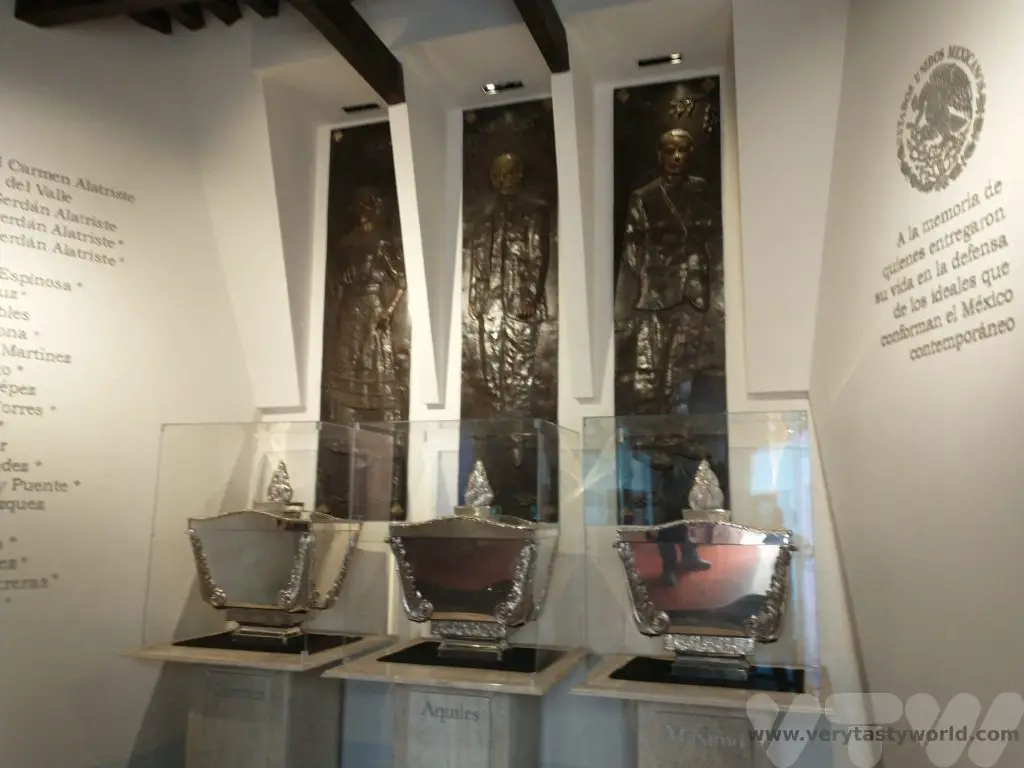
The house has been converted into a museum. It displays the living arrangements of the families.
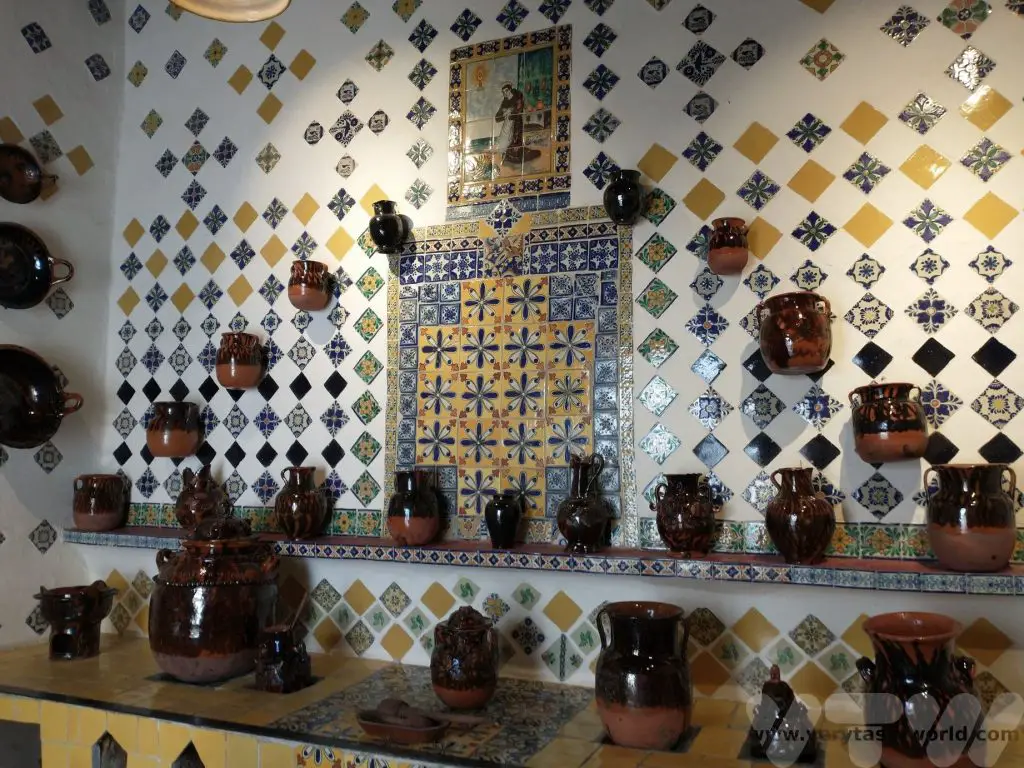
It also gives lots of information about the background of the revolution and its outcome. There is also a room dedicated to the women of the family.
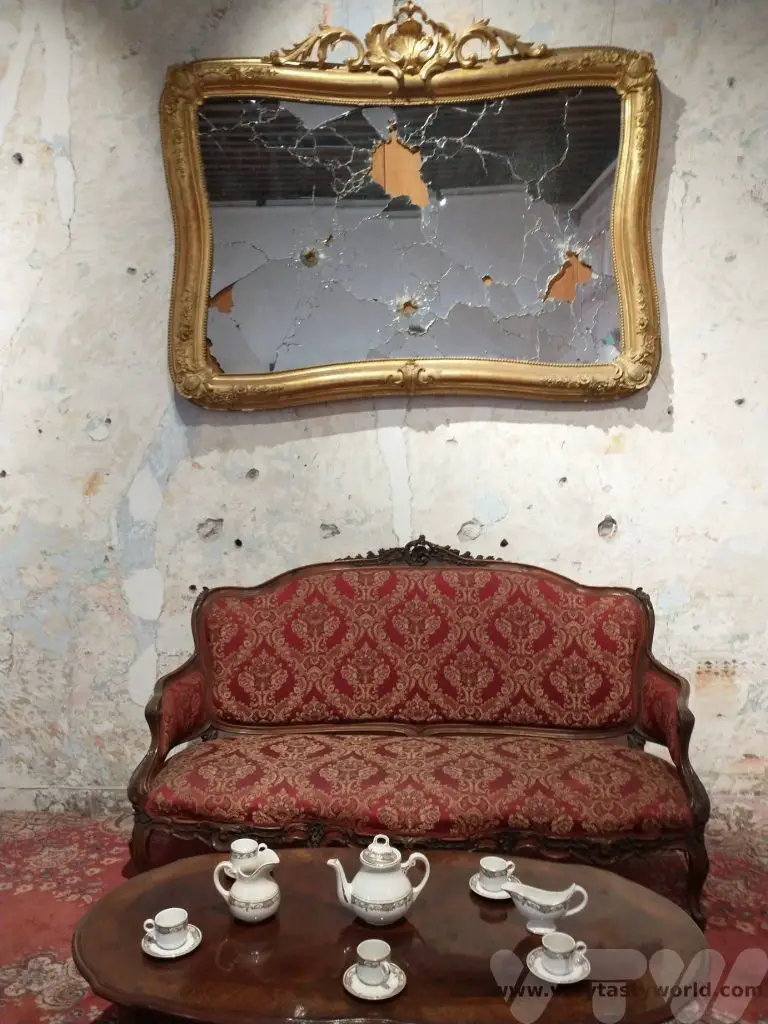
While the bullet holes on the exterior of the house look dramatic, they are actually fake. The building was renovated a few years ago and the workmen unwittingly rendered over the plaster, covering the original holes! After this mistake had been discovered the ‘bullet’ holes were drilled back in. If you look closely it’s quite clear that they could never have been made by bullets fired from guns manufactured in 1910.
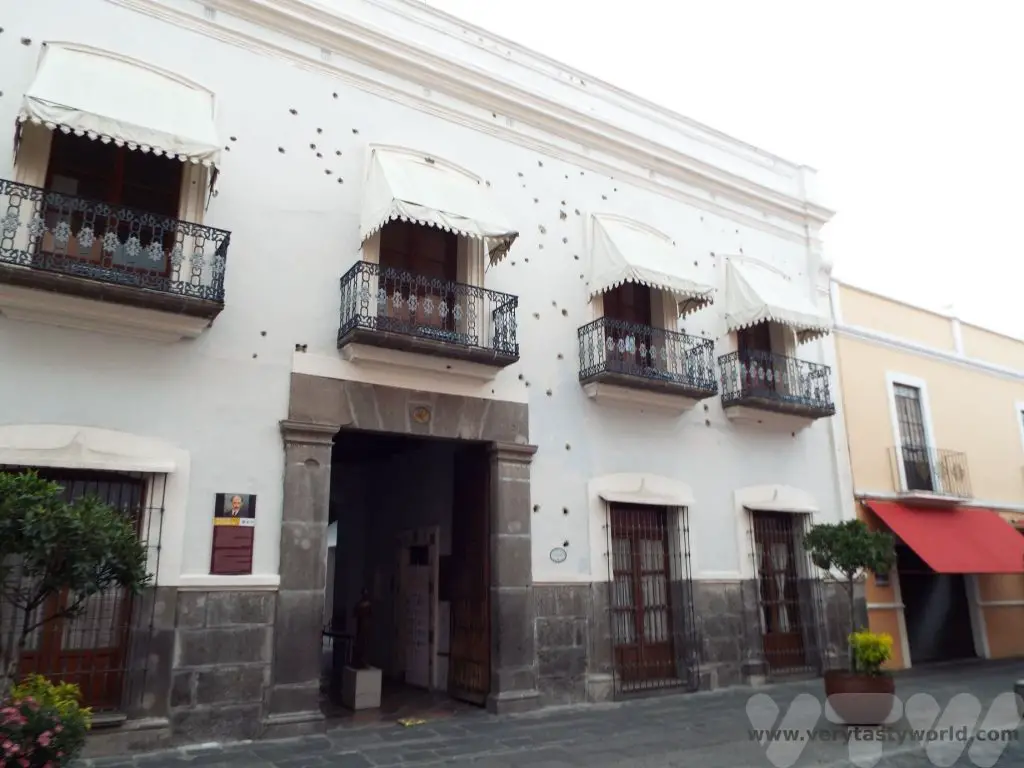
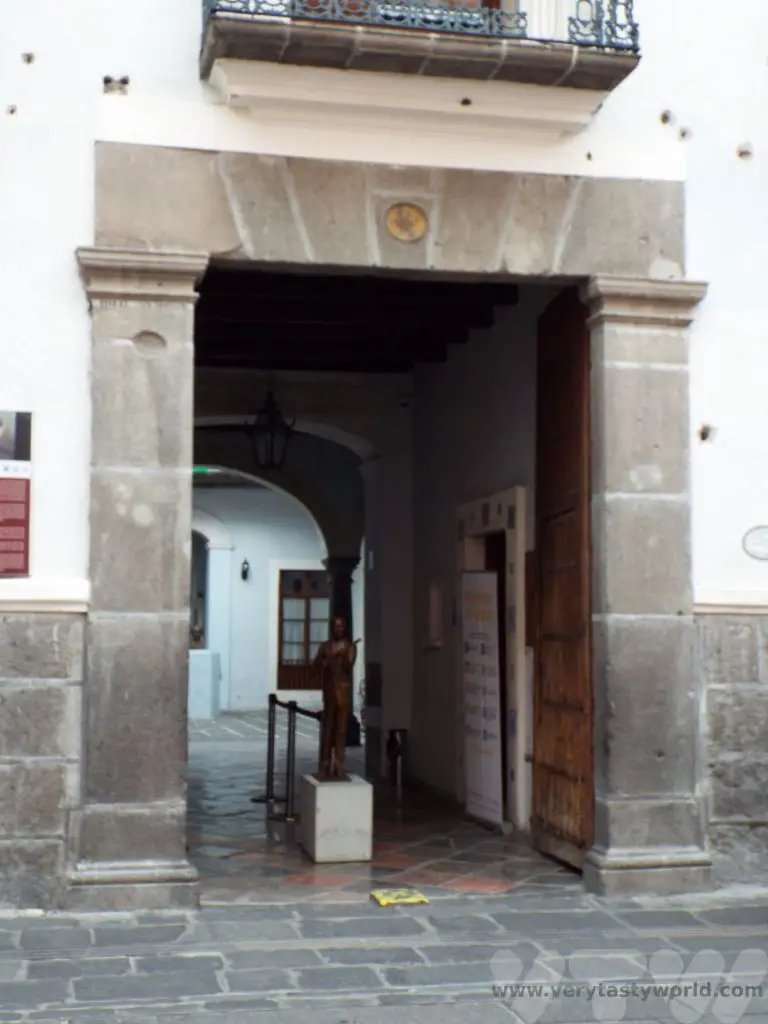
There are some genuine bullet holes in the stone doorframe at the museum’s entrance.
Other Attractions
There are lots of other places to see in Puebla. These are some of the highlights:
Señor de las Maravillas is a 17th century carving located in the Temple of Santa Monica. It is said that the image of Christ was carved from a tree that had been struck by lightning.
Municipal City Hall, located on the north side of the zocalo, houses a museum and art gallery.
International Museum of the Baroque is housed in a very cool building designed by Toyo Ito and exhibits a large collection of baroque art.
Lucha Libre – if you like Mexican wrestling (and who doesn’t?) there is a lucha libre arena which runs fun filled events, where masked wrestlers battle it out in the ring every Monday.
Barrio las Artistas is a great place to hang out and view local artists at work. There are bars and restaurants in the area and there is often live music in the evenings.
A Puebla Food Tour
We had organised a foodie tour which was perfect as an introduction to the sheer unadulterated joy that is Mexican, and specifically Puebla, cuisine. We spent an afternoon wandering through the streets stuffing our faces with the most amazing food.
Street Food
In the little alley Pasaje Zaragoza, just off the northern end of the zocalo, is a street food stall which always has customers queueing for its delights – Tacos El Pasaje. This is a family business and, while this type of outdoor street food is not strictly legal, this stall has been around for such a long time it is looked over. There is even a sign above the stall. All the products are made in the morning and stored in a covered basket. The food remains warm most of the day.
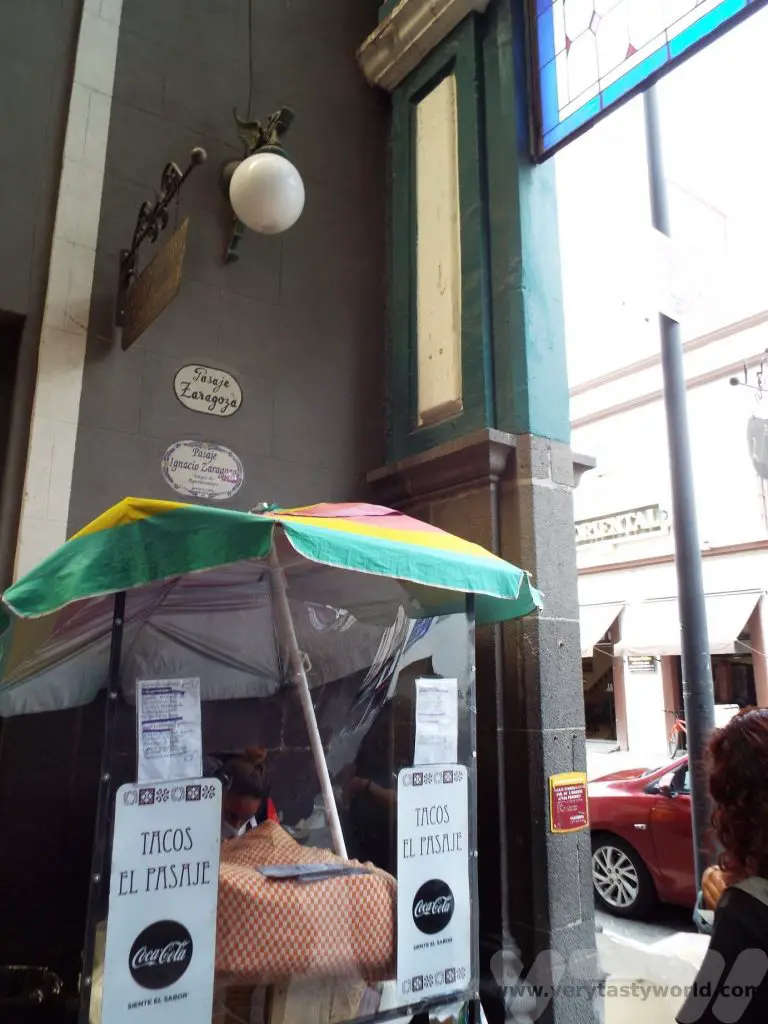
The menu is handwritten – when a particular filling sells out, a line is struck through the menu and you miss out. Until tomorrow, of course. This was where we enjoyed a taco with deep-fried chipotle chilli stuffed with cheese and accompanied with creamy avocado. It was unctuous and not too spicy as the cheese calms the heat of the chilli pepper.
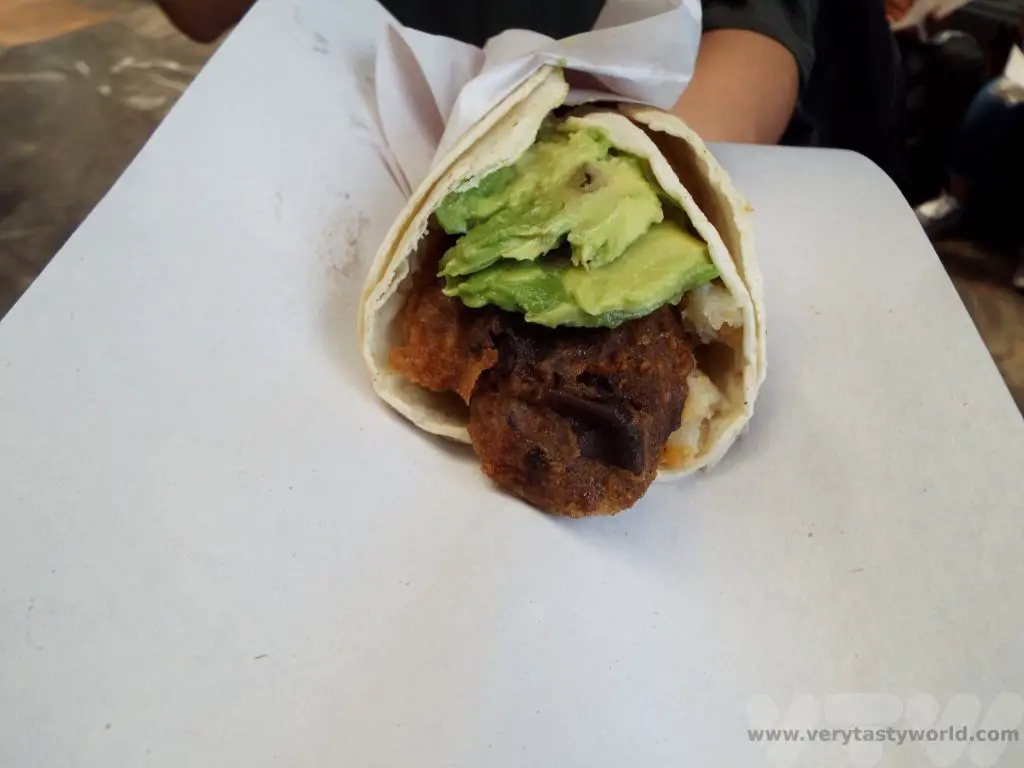
Our next stop was another family business, La Poblanita, a street stall located on Av5 Pte, just around the corner from the Zocalo.
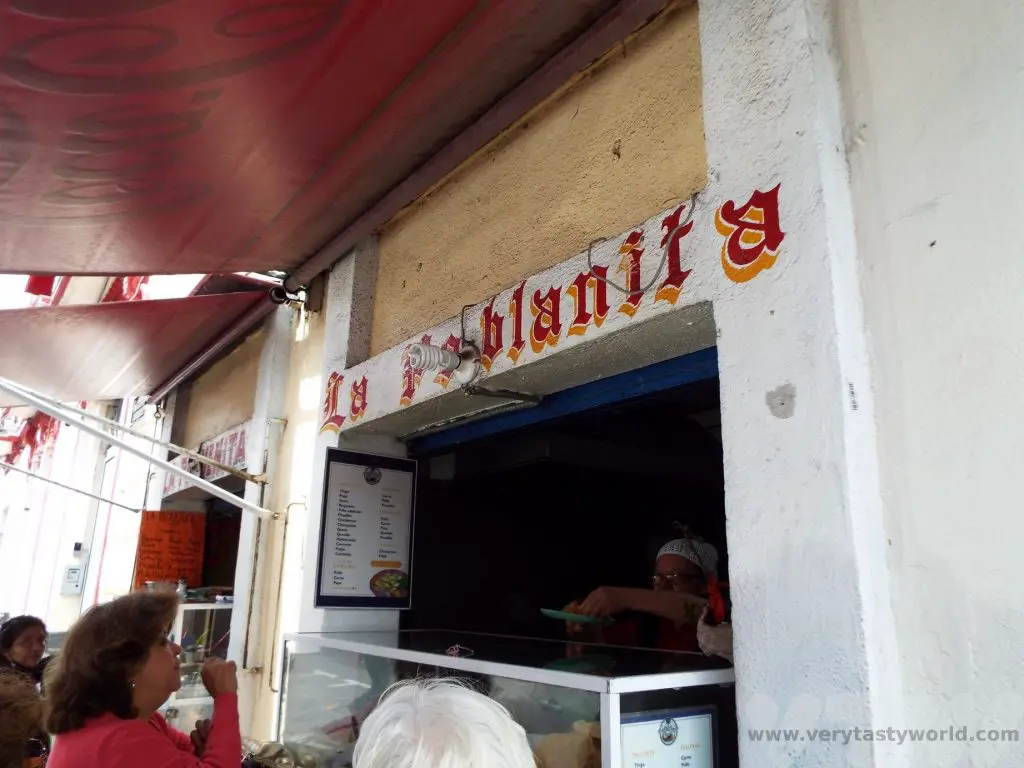
This was where we discovered molotes – a filled tortilla made from corn masa and deep fried. The filling was huitlachoche – corn mushroom – a fungus that grows on the kernel of maize. We had never come across these before and were blown away – the umami flavour was so intense. Our molotes were served with sour cream and salsa.

At this stall, we also enjoyed carne (although carne means meat, in this case it was beef) pelonas, wheat bread sandwiches filled with delicious beef and refried beans, and served with with two bright and colourful salsas.
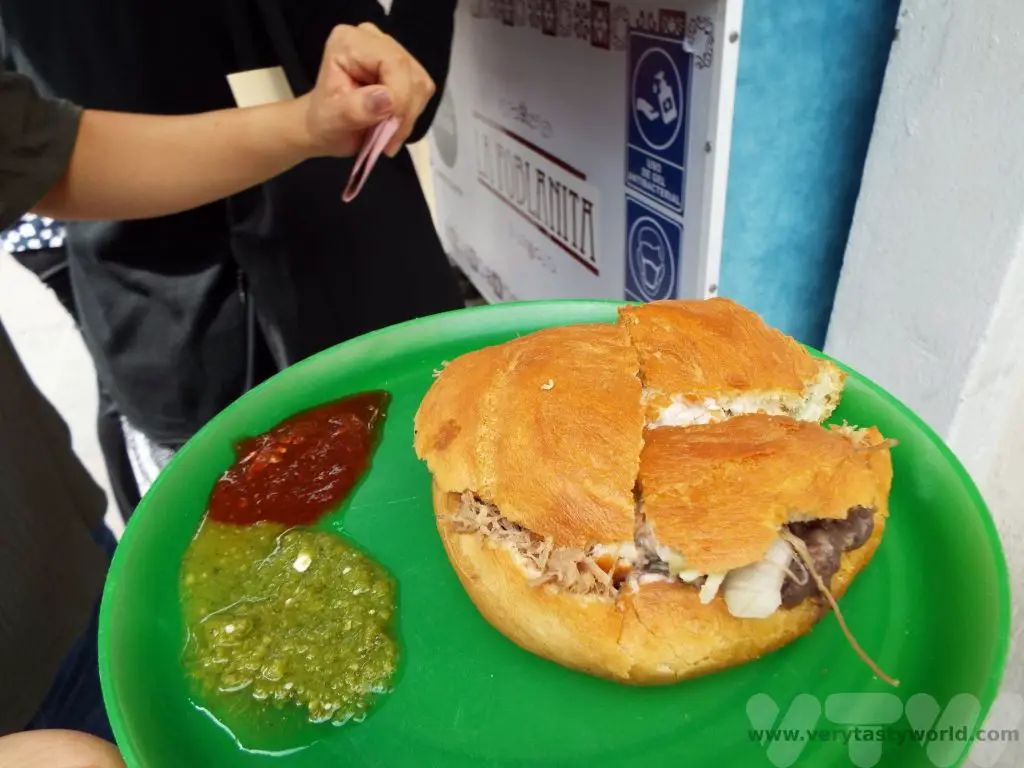
History of Tacos
Tacos could well be considered to be quintessential Mexican food. What we didn’t know was that they are actually a fusion food, imported from the Lebanese community who emigrated to Mexico in the late 19th century. We were quite surprised to see kebab shop-style spits slowly revolving in shop fronts cooking luscious cuts of meat. Tacos became really popular but they evolved in order to adapt to Mexican tastes. Pork, a meat rarely seen in the Middle East, replaced lamb and then the dish incorporated the local inclination to embellish the tacos with all sorts of salsas, condiments, and additional flavours. In Mexico, more is definitely more.
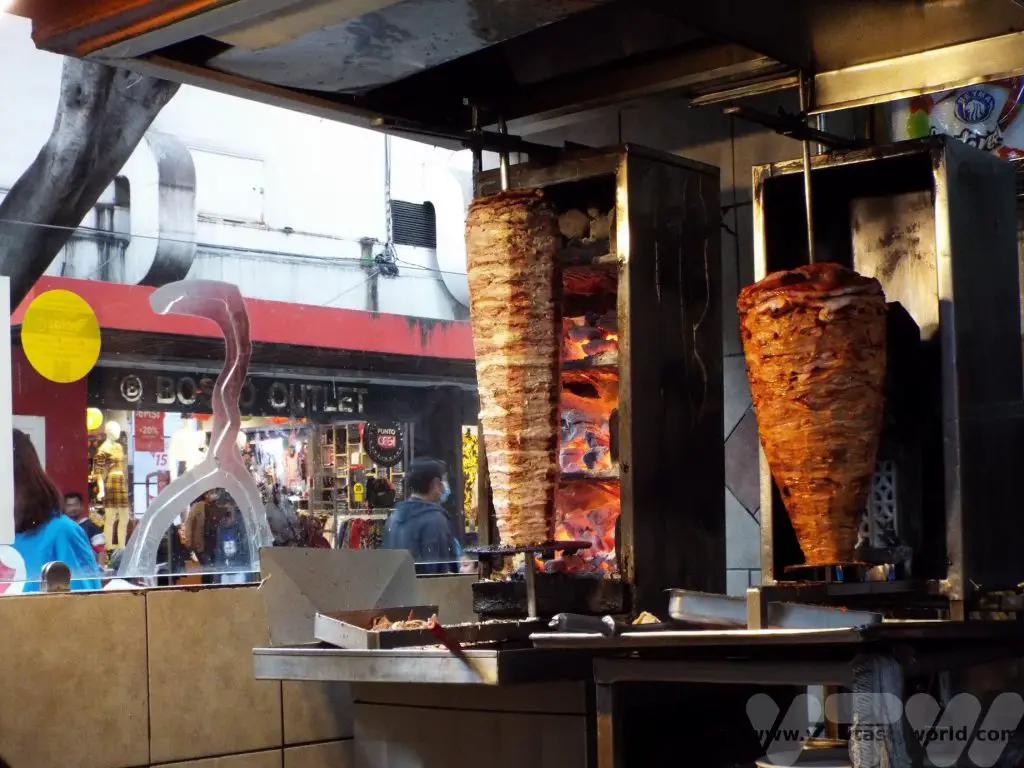
Taco Arabe are chargrilled pork tacos on a wheat bread tortilla. It’s a flatbread, a bit like a pitta but without the pocket – instead it is folded. We ate this with a sweet chipotle sauce and a squeeze of lime.
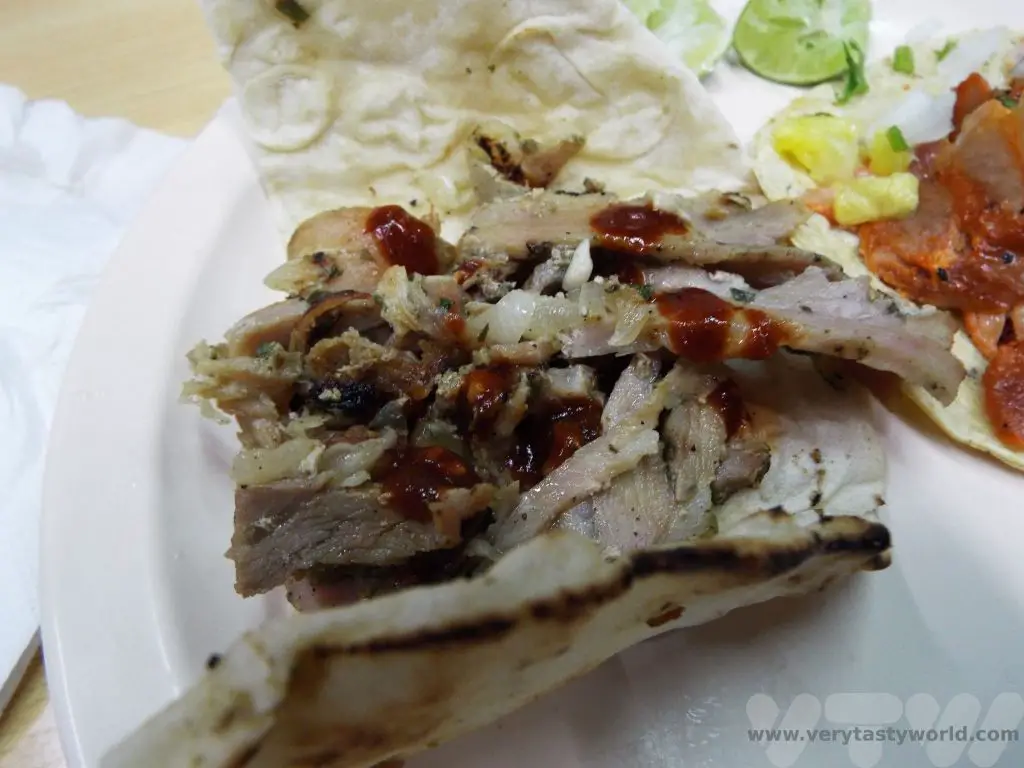
Al Pastor tacos have spiced pork inside a corn tortilla. We ate these with teeny chunks of pineapple, lime juice, coriander, finely diced raw onion, and a creamy avocado sauce.
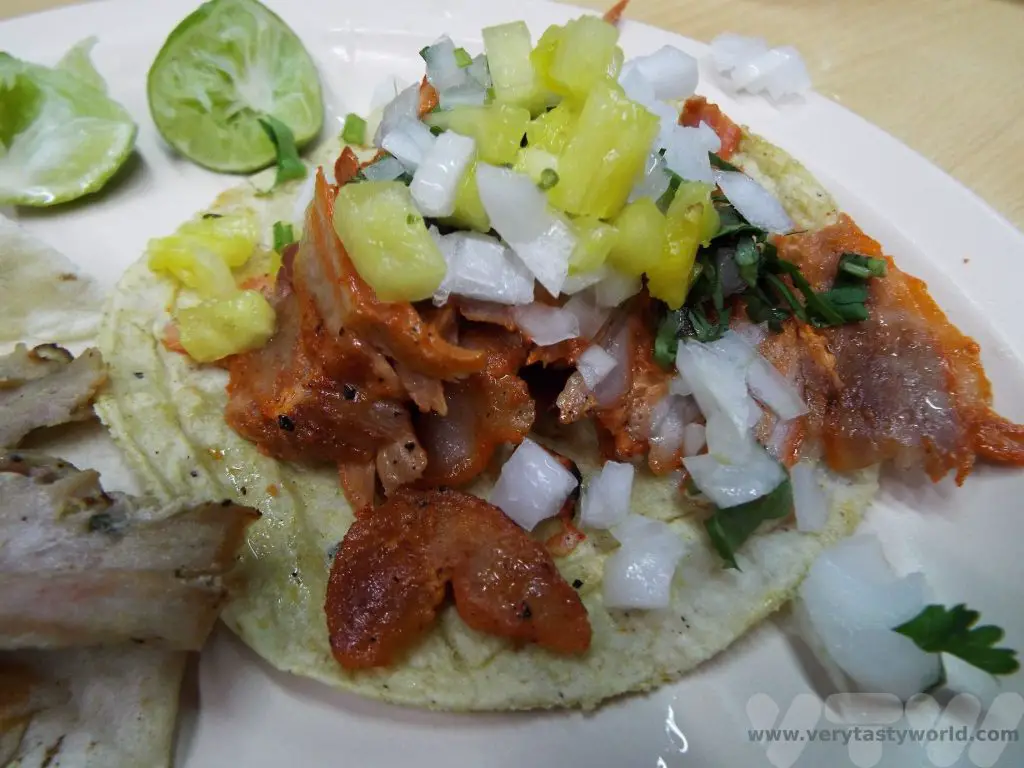
Most of the taco restaurants that we visited offered a number of salsas and multiple wedges of lime for the table. The etiquette for tacos is that they will arrive at your table either folded or open. If they are folded, open them up, add whatever salsa and additional flavours you want, roll or fold them up again, and scoff.
Our next stop offered some sweet surprises. The nuns at the convent on Santa Clara make cakes and sweets and these are sold in the lovely shop across the road.
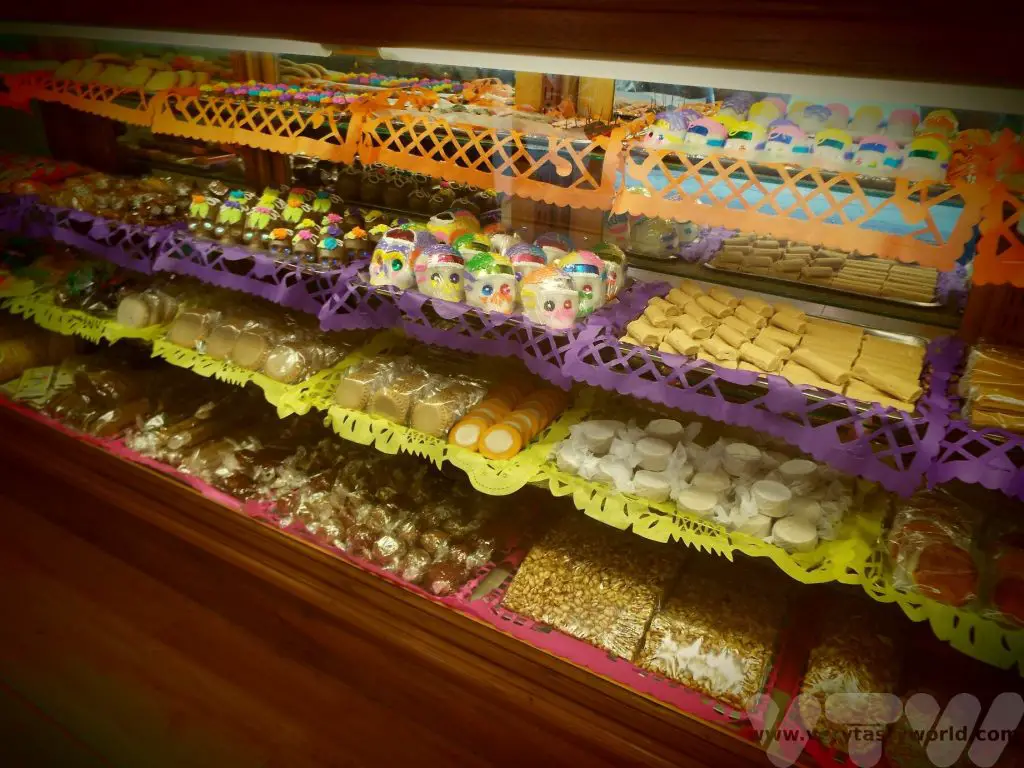
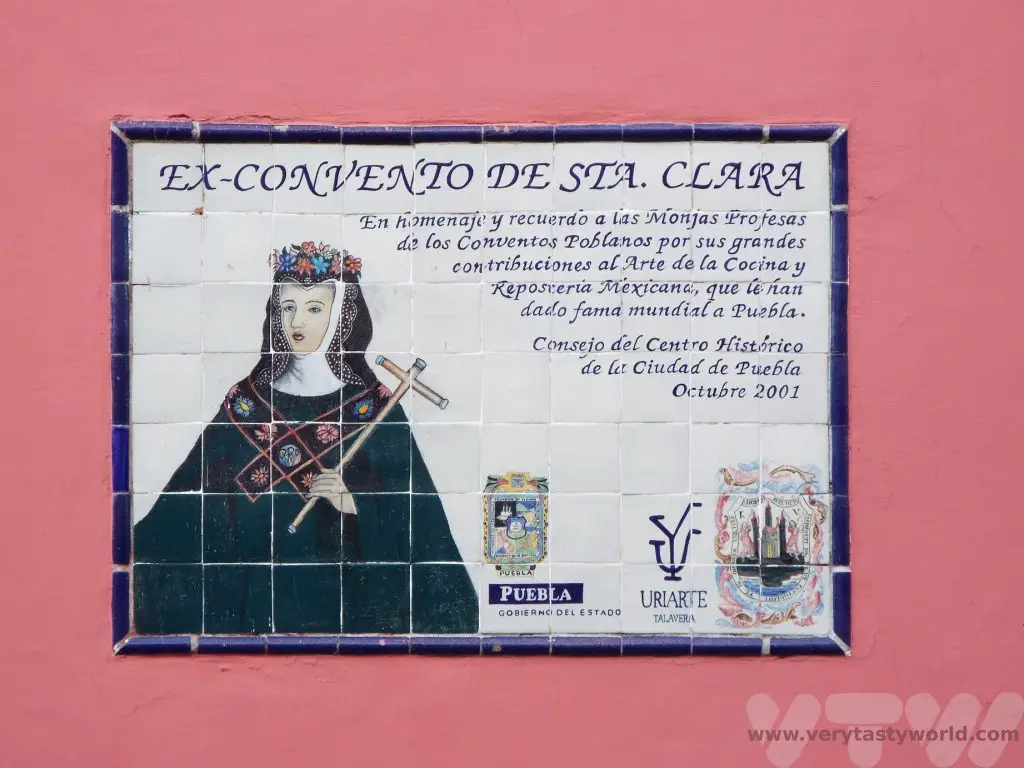
Camotes de Santa Clara are a sweet potato cylindrical-shaped paste flavoured with fruit and honey. There are several fruit flavours available – we chose strawberry.
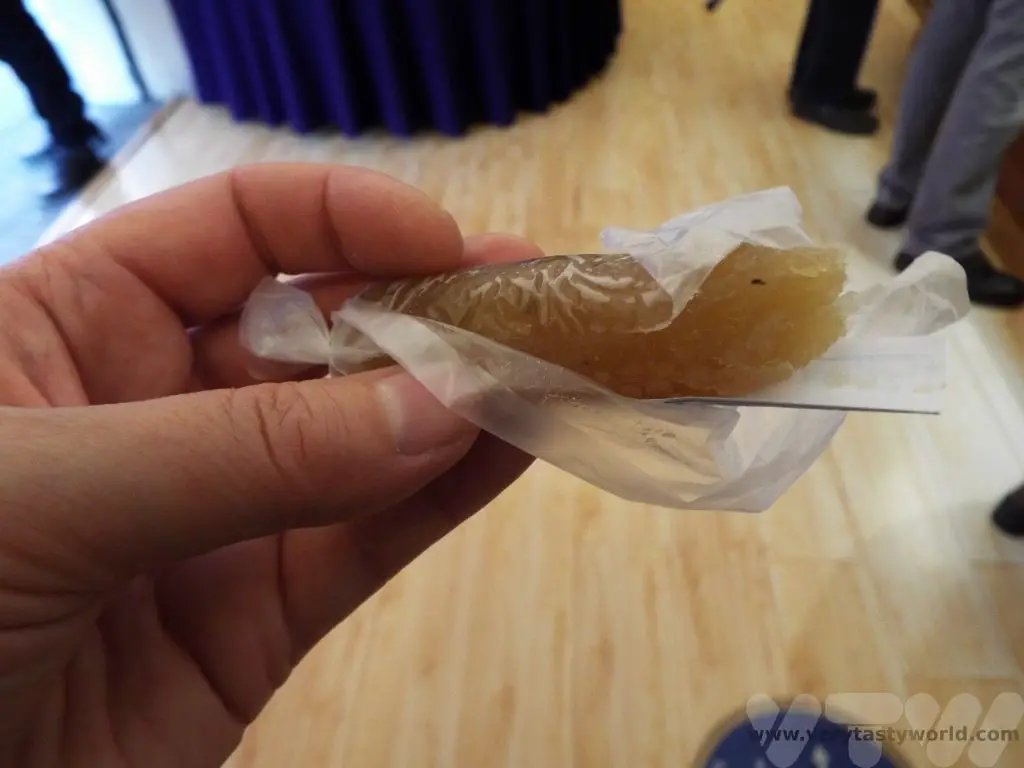
Tortitas de Santa Clara (torte from cake in Spanish) is a delicious fusion of Spanish biscuit base with a filling made from indigenous ground pumpkin seed and honey. A sprinkling of some of the local volcanic salt adds another dimension. This is a nice crumbly biscuit that has a lovely sweetness and smooth peanut butteriness of the pumpkin seeds.
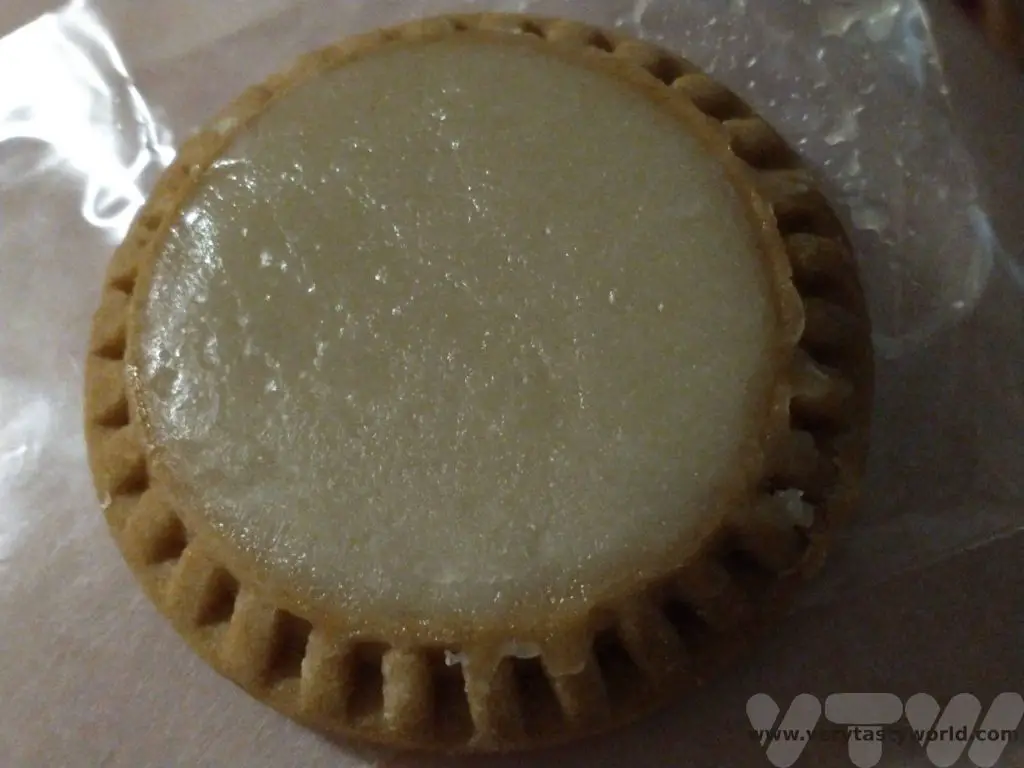
A Magical Market
A short walk out of town, across the road (which used to be the river), took us to Mercado Municipal La Acocota. It was lovely exploring this market, which had so many stalls selling fabulous-looking wares.
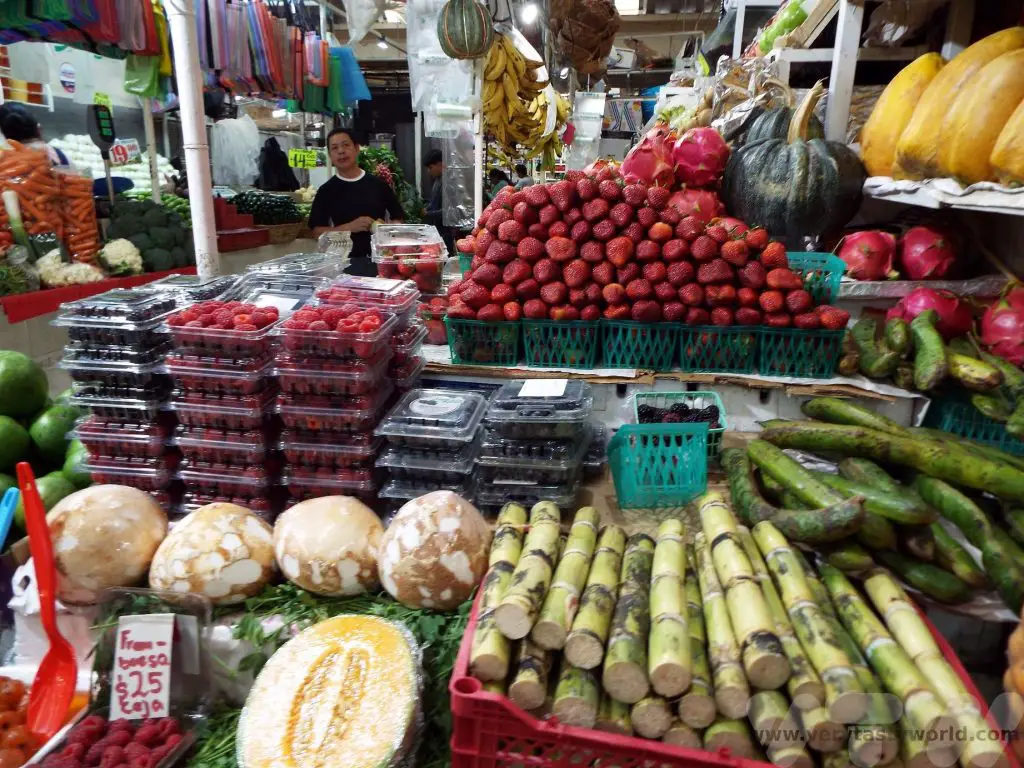
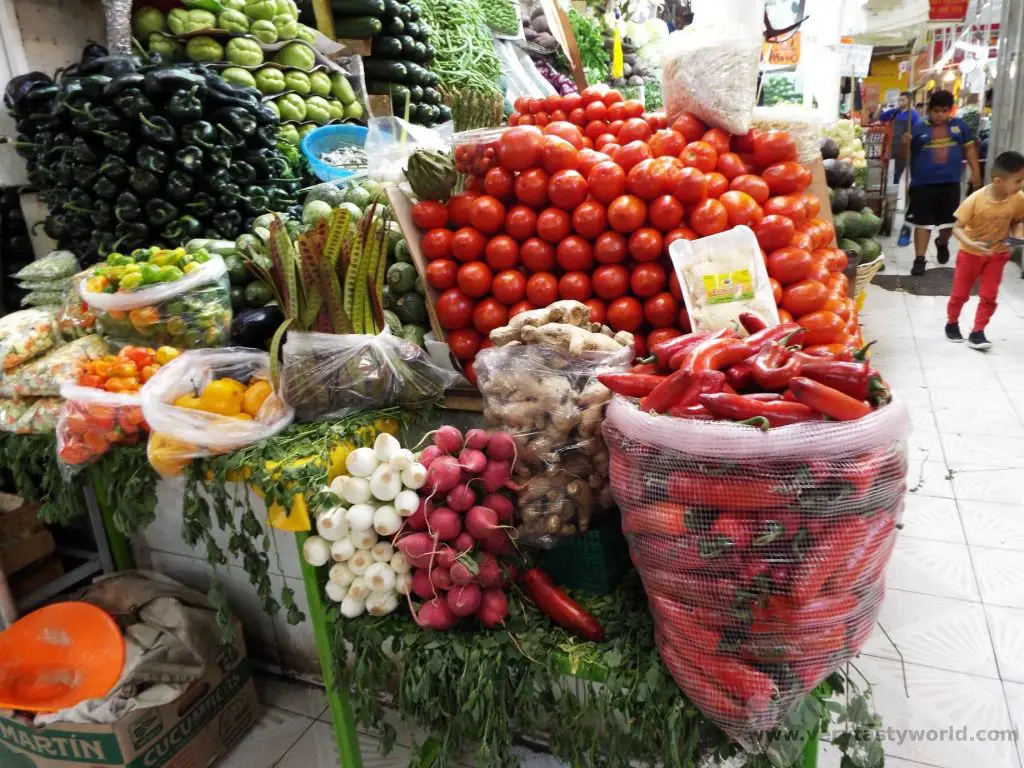
We also discovered the corn mushroom for sale.
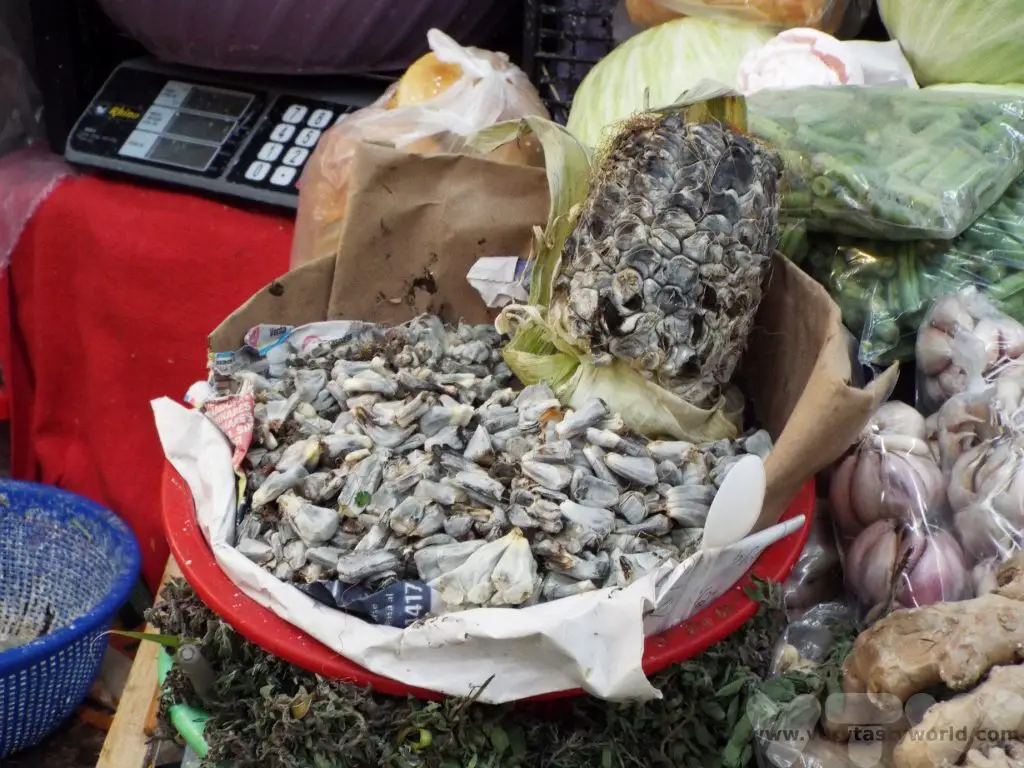
We’ve never seen so many different varieties of chilli pepper!
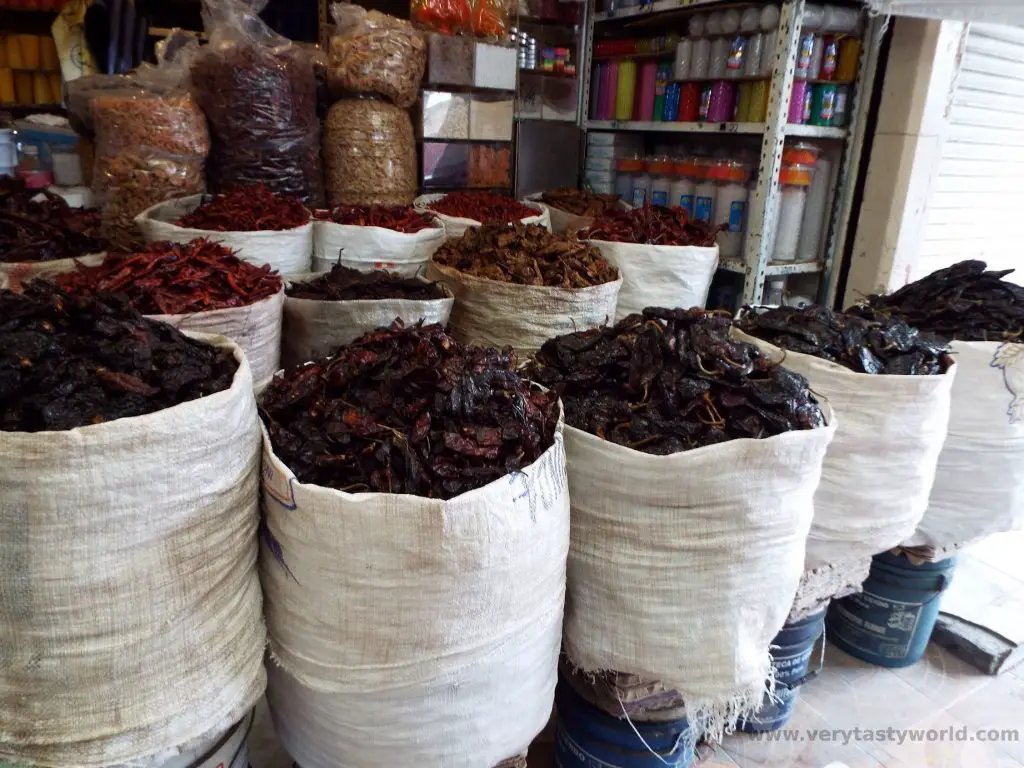
But we weren’t there to shop. We also had plans to eat. You can’t say you’ve been to Puebla unless you have tried a cemita – a massive sandwich of very great deliciousness.
Samita is another family-run business with three generations all working together at the market. They have a fantastic reputation. You sit on stools around the stall and can chat with other customers. Everyone was delightful. The bread is very important in the cemita – it is a wheat-based roll – substantial and fluffy. We enjoyed a Milanese escalope with stringy cheese, jalapeno and avocado.
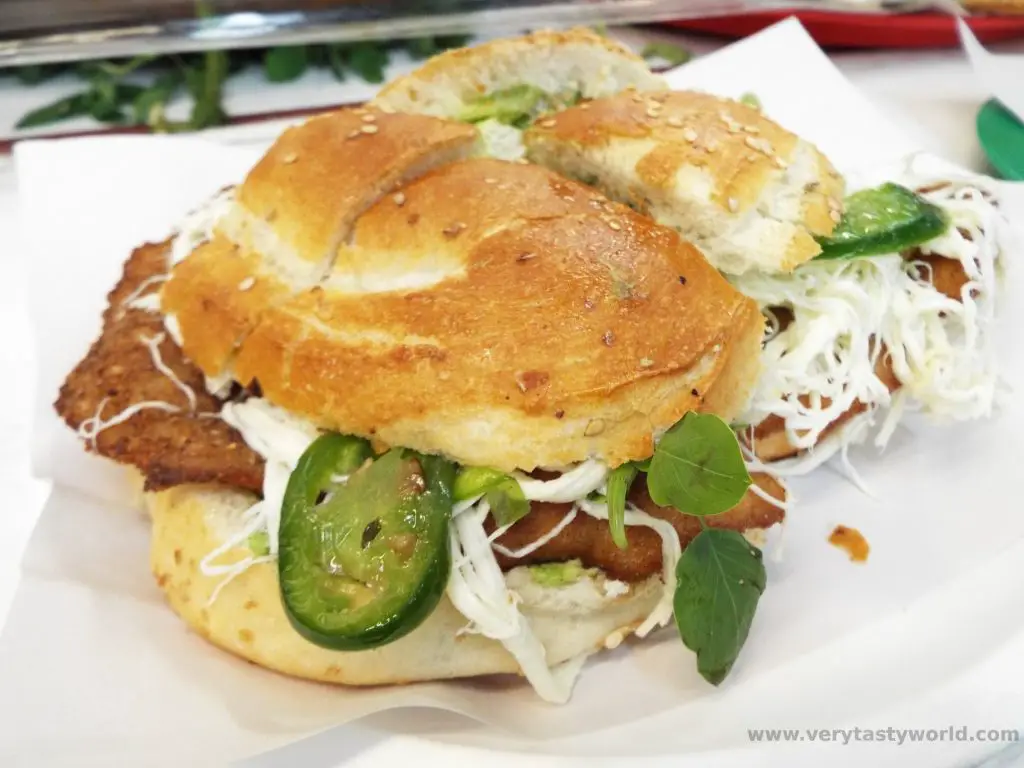
The mega cemita has four fillings including escalope, boiled pork skin, ham, or sliced cheese.
Puebla’s most famous dish is mole (pronounced molay) poblano. It’s another essential dish to try when visiting the area. Over twenty ingredients are used in the most simple mole, including multiple types of chilli, a variety of nuts, and chocolate. The mole at this market is considered to be much more authentic than moles that you will eat at hotels, which are generally more sweet and less spicy. This is where the market stall holders come to eat their lunch – there is always a variety of moles on offer.
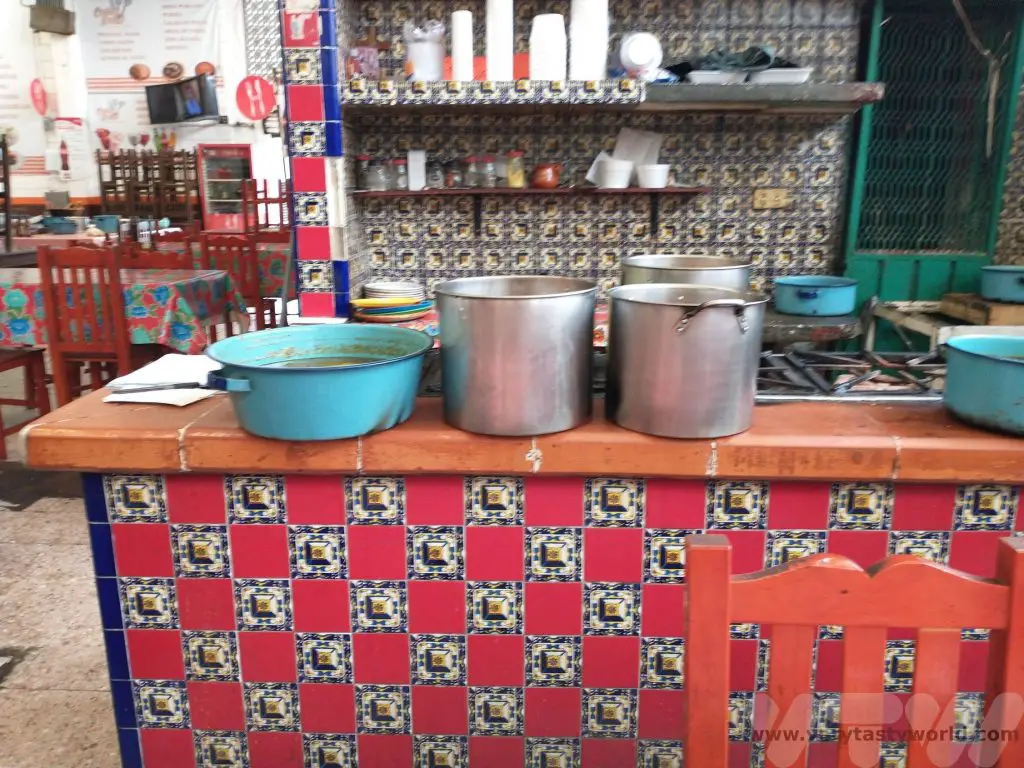
The market’s mole was far more complex and sophisticated. It has a slow burn from the chilli and a mild, but important, bitter element. You get hit by heat in first mouthful but then your mouth gets used to it and can start to savour the other flavours which also include sweetness. This was a rolled tortilla, with no filling, topped with mole sauce, sesame, raw onion and strips of boiled chicken. Simple. Classic.
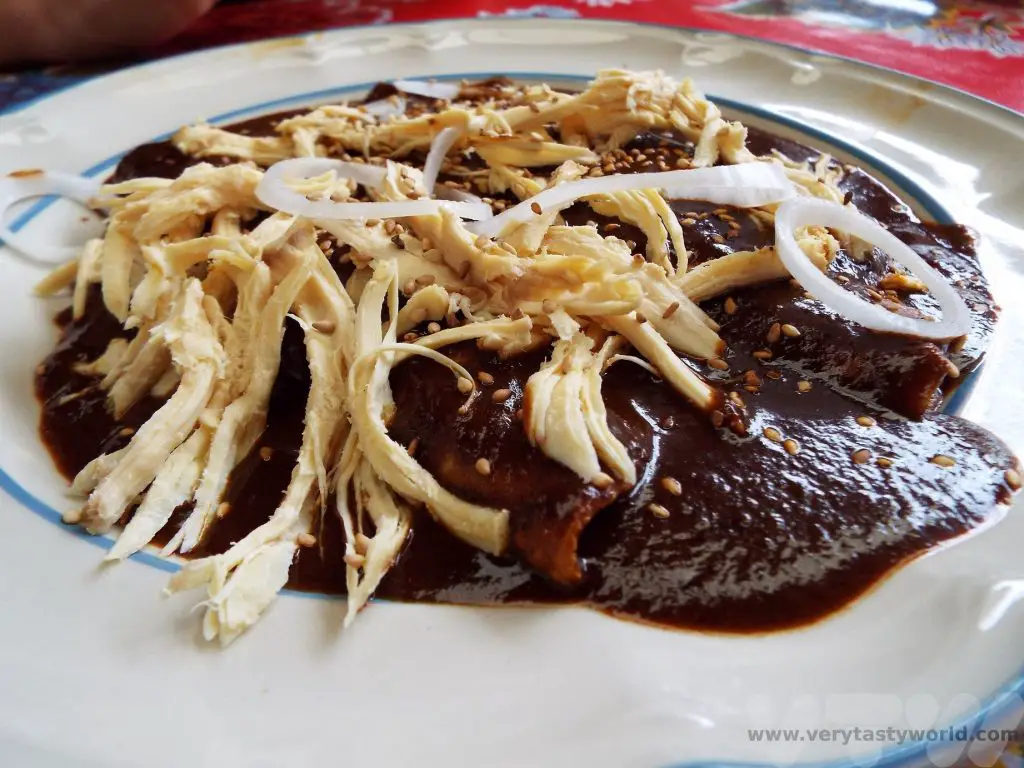
And finally, almost full to bursting point, we stopped off at a local cantina, actually inside an antique shop, where we indulged in a shot of pasita, a liqueur digestif made from raisins.
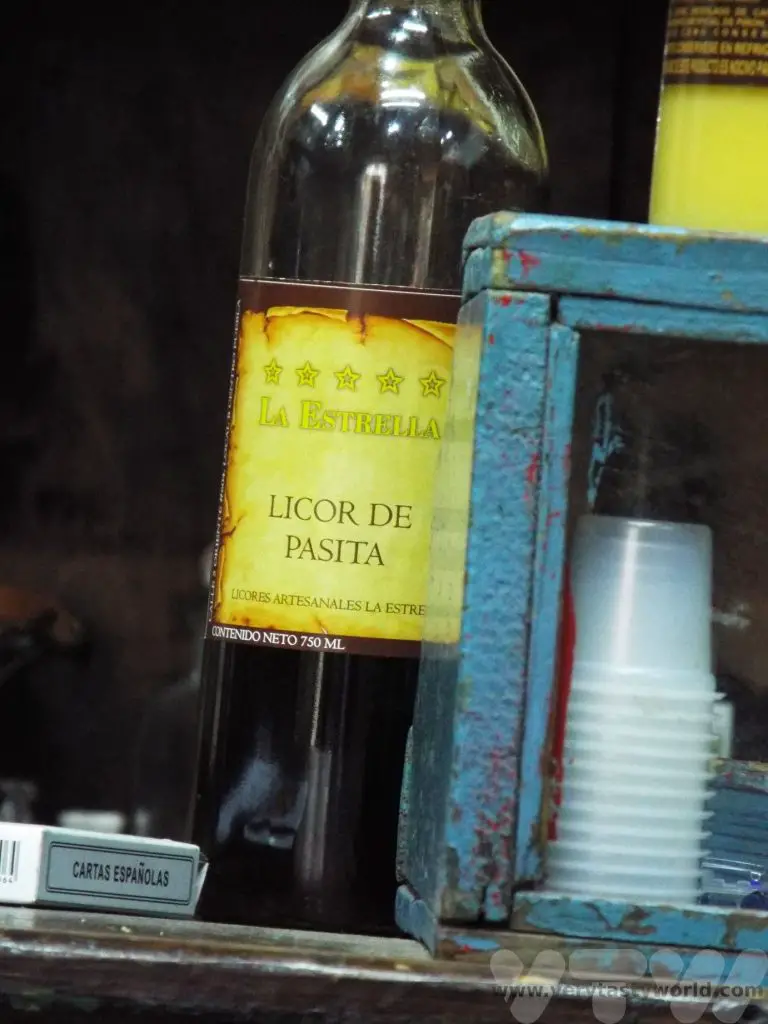
It’s sweet and boozy and rounded off an amazing tour.
Fine Dining
The street food tour of Puebla was a fantastic introduction to this city’s delectable, diverse and delicious cuisine. We also have a restaurant recommendation for local food in a fine dining context (which we visited on a different day to the foodie tour). El Mural de los Poblanos is on Calle 16 de Septiembre and offers typical Puebla food. Again, this mole was more authentic than some of the more touristy establishments.
It’s very popular so it’s definitely worth making a booking. Also, we made the mistake of ordering cemitas as our starters (before we knew what they were) which turned out to be so enormous that we knew we wouldn’t be able to eat our mains if we ate them all, so the staff were very kind and boxed up the extra food for later snacking.
There is also a craft beer emporium, the Bilderberg taproom on Av 5 Ote, which we felt was important to investigate. They offered pints of local draft beer as well as tasting flights. They had a stout which was extremely good indeed, although it was only after we’d quaffed a couple of pints and tried to stand up that we realised that it was 12%! Those leftover cemitas came in handy soaking up the booze later that night to try to mitigate the hangover.
We thoroughly enjoyed our time in Puebla – there was so much to see and do and taste. We’d consider it an essential stop on any Mexico tour. We can’t wait to return!
Related Posts You May Enjoy

- Rivers and Rainforests – A Guyana Itinerary
- Best Time To Visit Machu Picchu 2024 Update
- A 2 Week Patagonia Itinerary
- Day of the Dead in Campeche
- A Galapagos Land Based Itinerary
- RECIPE: How to Make Costa Rica’s Gallo Pinto
- A Tasty Puebla Food Tour
- Costa Rica Wildlife Sanctuary – Caño Negro
- Visit Torres del Paine National Park in Patagonia
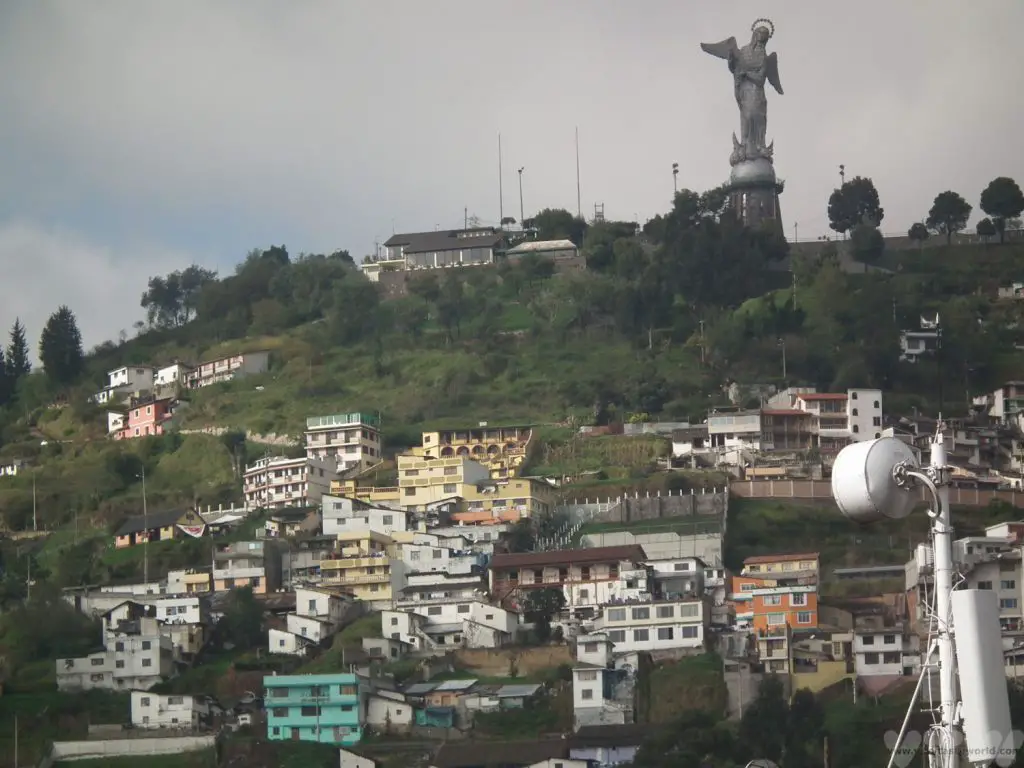
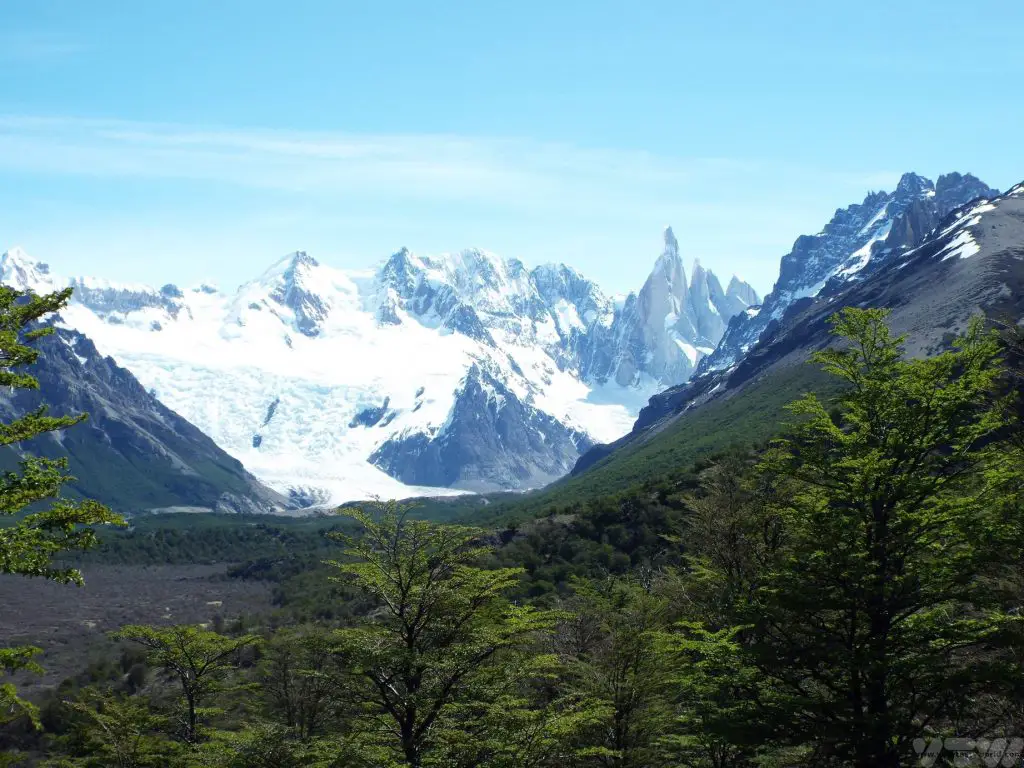
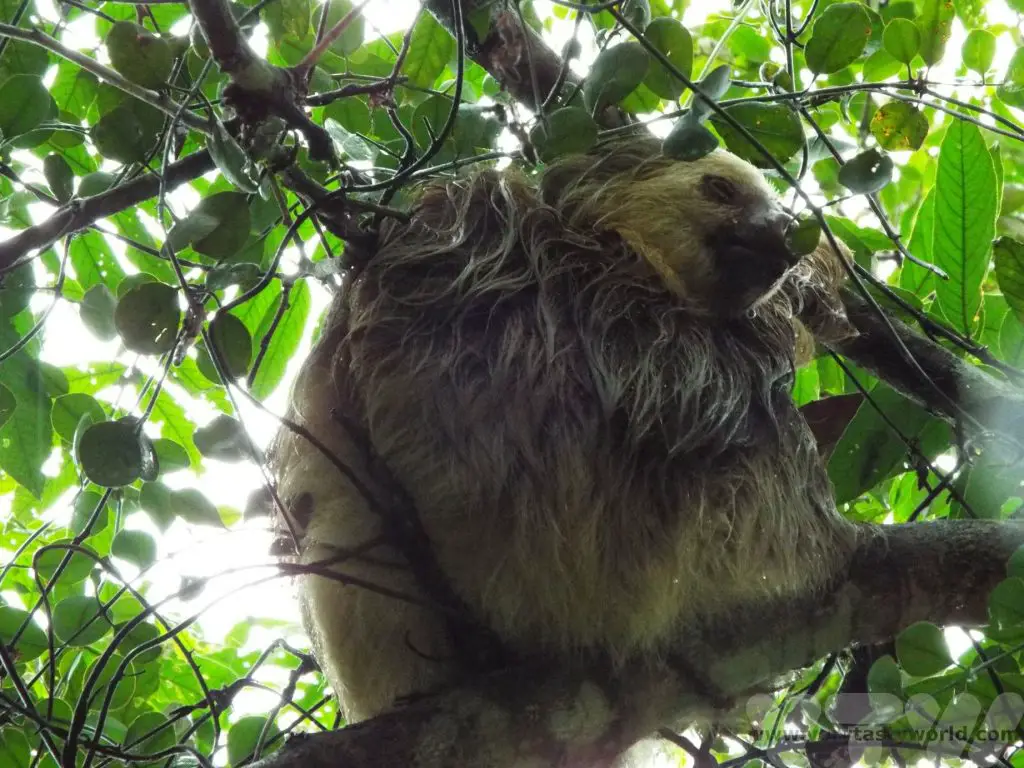
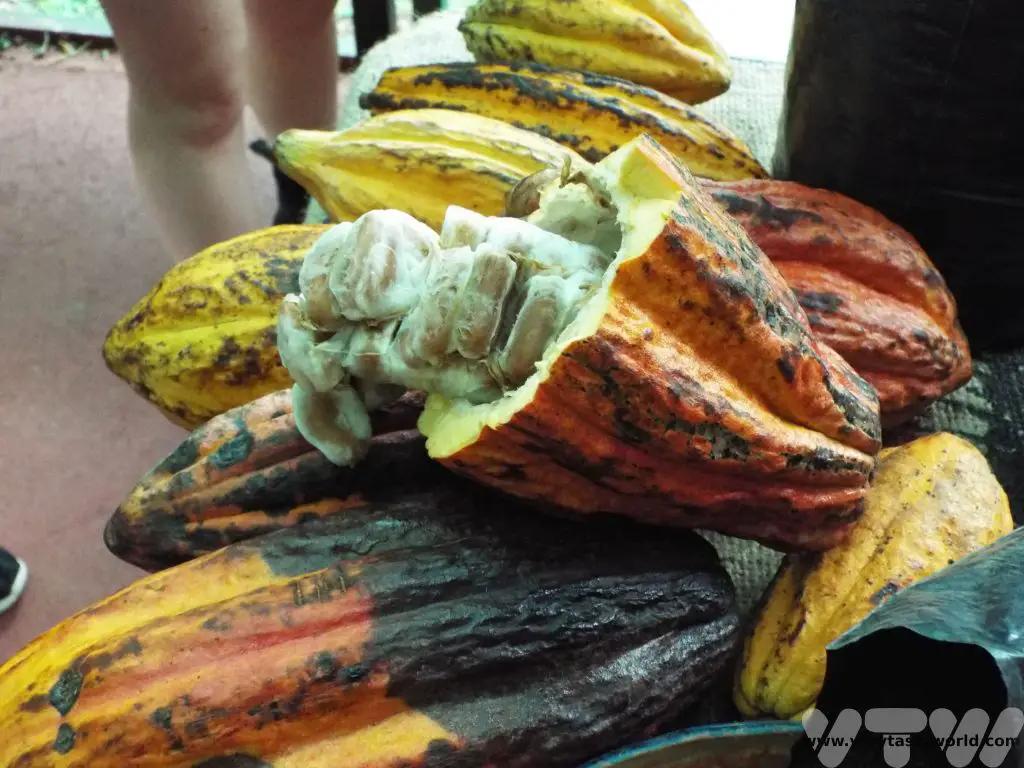
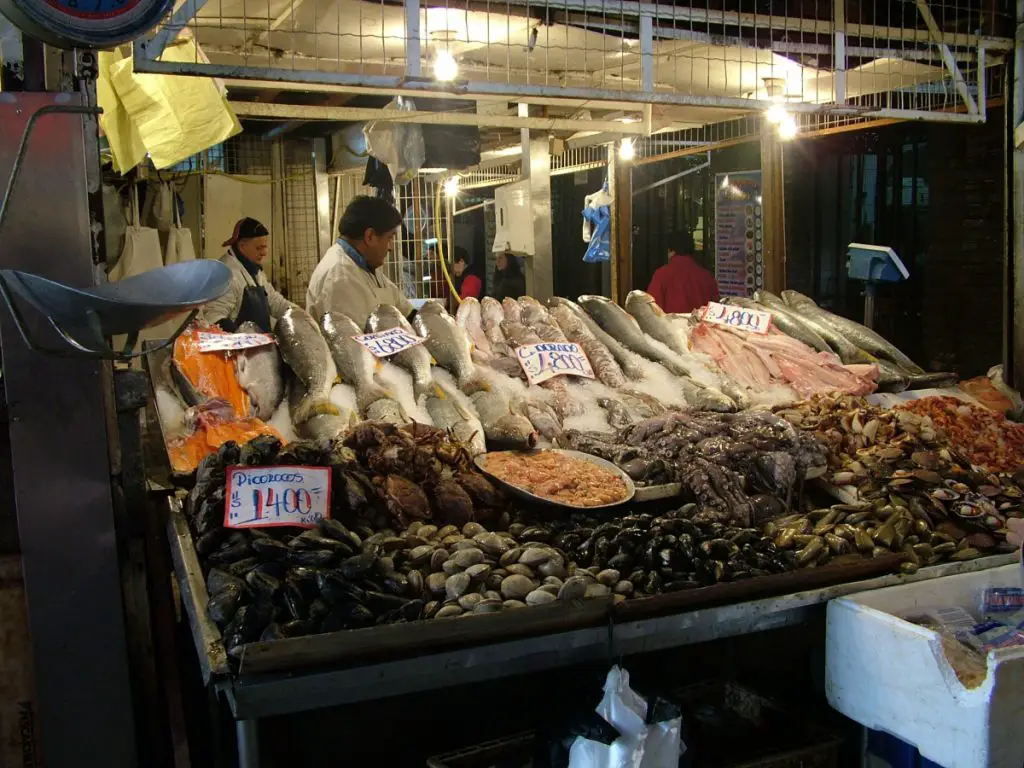
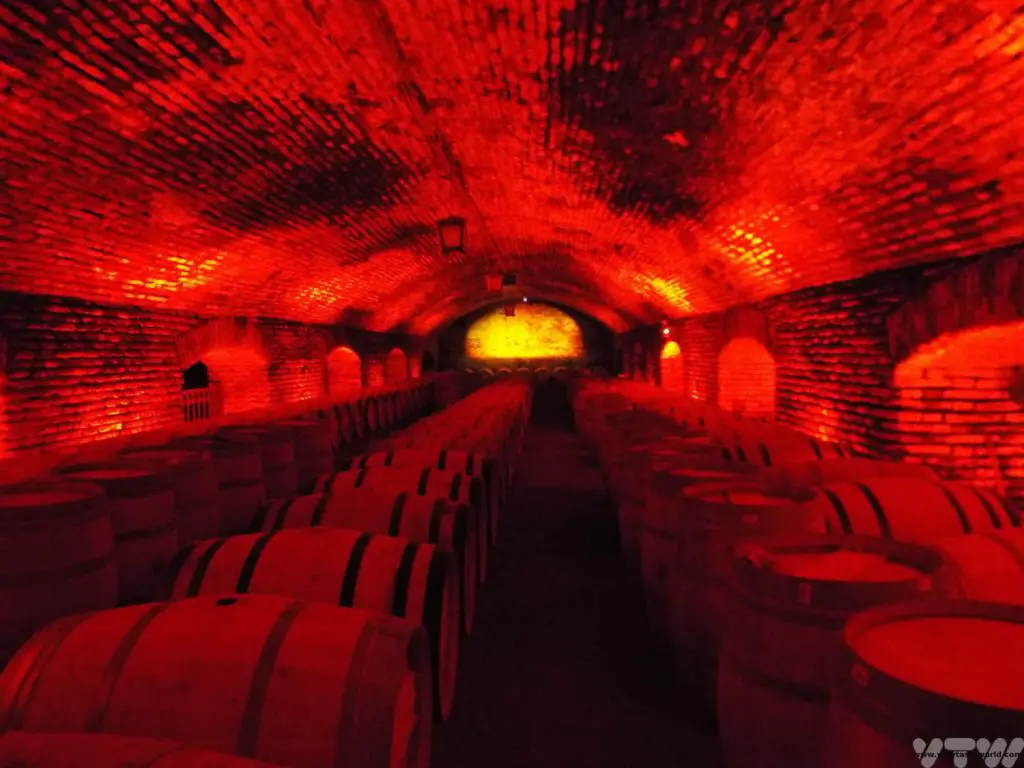

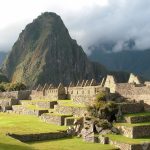

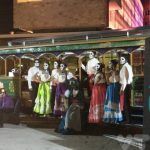

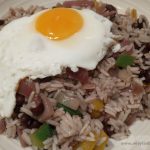
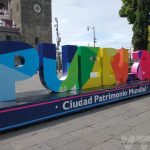




Puebla looks like it should be on everyone’s must-sees in Mexico! I would love to visit the Biblioteca Palafoxiana; libraries are wonderful and this one has so much history. The food sounds amazing too and it looks like you struck gold on the food tour. I had no idea that tacos were originally from Lebanon. How interesting!
Thank you! We absolutely loved Puebla – it’s a really cool place and with so much to see. We would love to go back. The Biblioteca Palafoxiana was just wonderful, a real treasure of a place. And you’re right, we absolutely struck gold on the street food tour. Learning the history of food while eating it is so much fun!
That’s a cool looking place expecially the cathedral, my camera would be busy there. The street food looks delicious too.
Thank you! We found Puebla to be absolutely delightful. So much to see. The churches were amazing and there were so many of them to visit – your camera would definitely keep busy. And the street food was sublime!
The food looks good and there are so much variety!
Though I don’t know how is it possible to try all of it during the tour and don’t burst open :))
Oh the food was just brilliant! There was a lot to taste but we hadn’t eaten anything all day and we shared one portion of each dish. We also took some leftovers and sweets back to the hotel with us. We would definitely have burst if we had eaten all of it!
I was looking forward to reading since Puebla is on our list for 2023! It did not disappoint! I want all the food! And just because we ought to do something besides eat, the Cathedral and Church of Santo Domingo are gorgeous.
Oh, that’s fantastic that you are headed out to Puebla next year! We are sure you will love it, especially the food. Thanks so much for reading and commenting!
Puebla is the place I regret most having skipped on our Mexico trip this year. The Church of Santo Domingo looks super beautiful with all the gold and the market looks super interesting. Now I miss authentic tacos…
Thanks so much for your comment. We absolutely adored Puebla and really loved the food there. You’re right about authentic tacos – we’re learning to make them ourselves but need a fair bit of practice!
To be classed as a UNESCO site is indeed an honour but to have a Cathedral regarded as the 8th Wonder of the World is even more impressive.
That library looks wonderful, I didn’t realise that such huge libraries exited in Mexico.
I am always intrigued by items from before BC and to know there are some here from 2500BC draws my attention in. I am always amazed at how creative people were 4,000 years ago in their designs.
It was so interesting to know that tacos actually have a Lebanese derivation – how extraordinary, but fun to know.
I want to get to Mexico one day and reading this has moved Mexico further up the list!
I did the wrong thing here and did read this while I was hungry and now wish I could get samples of the many foods I’ve seen here!
Puebla was one of the most wonderful places we visited in Mexico. So rich in cultural history. The library and churches were wonderful and we spent hours in the museum. Like you, we were fascinated by the pre-Hispanic designs, especially those which were thousands of years old. And the food – oh, it was wonderful!
I love Mexico and have been there 27x. But I’ve never been to Puebla. Looks like a great food tour and a fabulous day trip from Mexico City!
Thanks so much for your comment! 27 times? Wow! This was our first Mexico trip (much delayed from 2020) but we absolutely adored it there and would love to return. Puebla was a delightful city and the food sublime! It would be possible to do as a day trip from MC but we’d recommend an overnight stay as there is so much to do.
Michelle would love Puebla as she is a huge mole fan. I’ve seen buckets of chili peppers like those bags in a Mexican grocery store in my hometown – it’s fascinating. It’s just fun to smell the different peppers. I need to visit Mexico. We’ve been resorts but nothing more than that. Unfortunately, due to various reasons but chiefly politics I’m sure, we’re flooded with negative news about Mexico in America, so I’ve always been concerned about traveling there.
I’m very envious of your Mexican store in your hometown. I would LOVE to be able to buy chillies that way. It’s a shame that there are so many negative things about Mexico in the news. We adored it there. It’s worth being vigilant (as you would in any city) but we found the local people to be absolutely delightful – looking out for us on buses, offering help etc. Our visit was magical.
Firstly the cathedral and church are wonderful pieces of architecture. And the food looks absolutely amazing I love the little story of the street food stall
The architecture really was amazing in Puebla and the cathedral and church were stunning. But the food! We really liked the little street food stall, especially that it wasn’t strictly legal but that the food was so good it was allowed. I managed to get a rare shot when there wasn’t a long queue!
Puebla was on my list even before reading your blog but the street food tour makes me want to go IMMEDIATELY. I never knew where tacos came from (and never saw anyone else try huitlachoche. SO umami, right???)
let’s go traveling and eating together, ya? thank you very much 😉
Thank you so much! We’d go back in an instant too. We LOVED Puebla. Totally up for travelling and eating with you – that would be completely brilliant!
Oh my goodness. I am now extremely hungry. lol This is not good for my diet. 😉 I think the Al Pastor tacos are my favorite on the post. *Drooling*
Thank you. Oh we adored the food in Puebla – and Mexico as a whole. The tacos were so delicious we’re learning to make them at home!
Puebla looks fabulous with many things to experience. The museum sounds incredibly interesting… But the food has me hooked. I do love a good mole sauce and you are so right about the authentic mole isn’t sweet. I need to find some of that corn mushroom to taste.
Lyn | http://www.ramblynjazz.com
Thank you! Puebla was a delight to visit and we very much want to return. The food was sublime. The corn mushroom was such a surprise, it was so delicious!